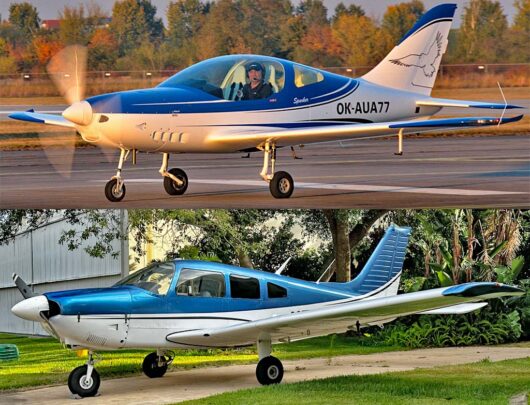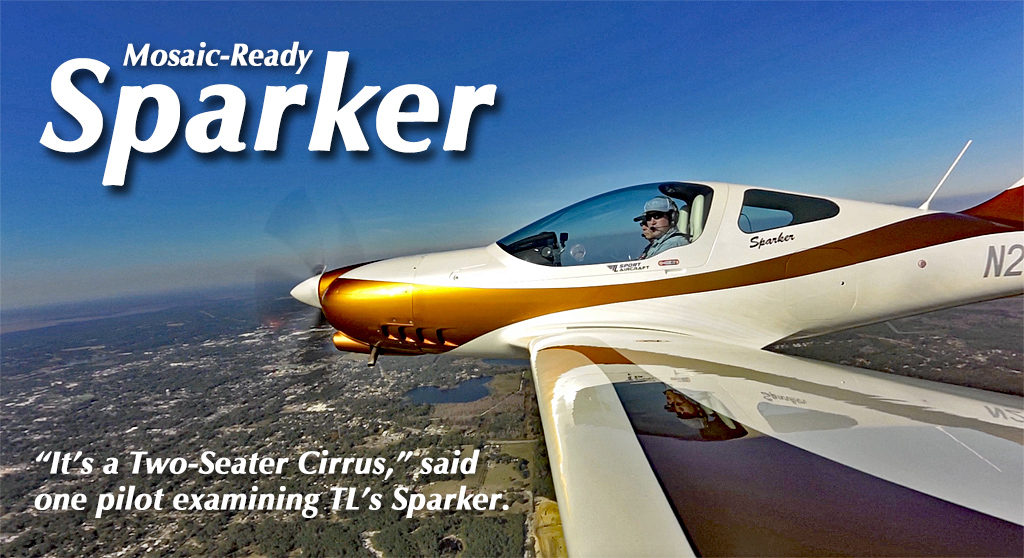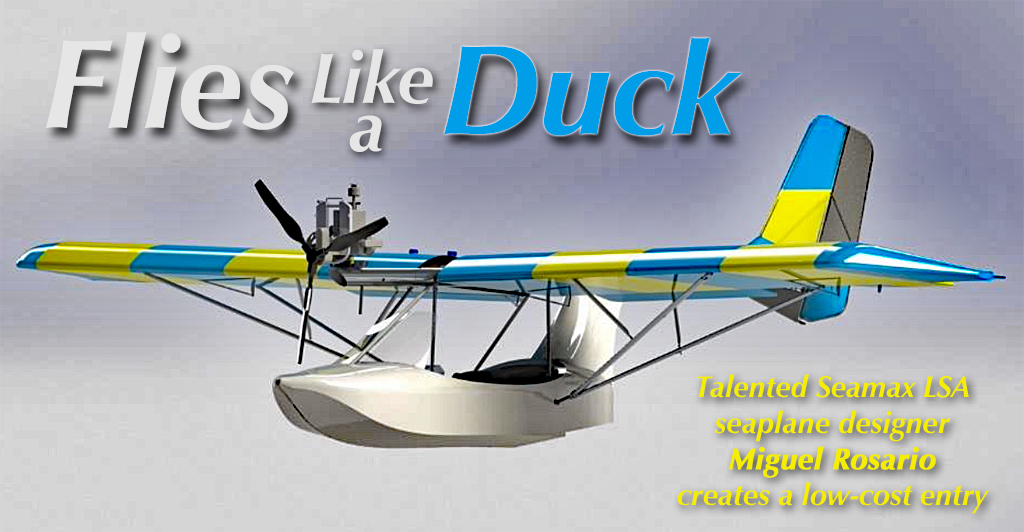
Article Updated July 17, 2024 — After this article was posted, Miguel Rosario reported, “Duck is still in tests. Now we will install a 912 ULS 80-horsepower engine, as requested by future customers.” He continued, “Molds are under construction for production, which we hope to start in three months” (approximately October 1, 2024). He finished, “I will keep you updated on all developments regarding Duck.” —DJ You probably know Seamax. This longtime, performance-oriented LSA seaplane was one of the first to make a splash in the U.S. light aircraft market way back in December, 2007. Today, regretfully, the Seamax company is going through some very difficult circumstances as noted in this State of the Seaplane Sector report. We don’t know the end of those stories yet. Nonetheless, Seamax M-22 designer Miguel Rosario remains active. You can’t keep a good man down but apparently you can keep him on the water.


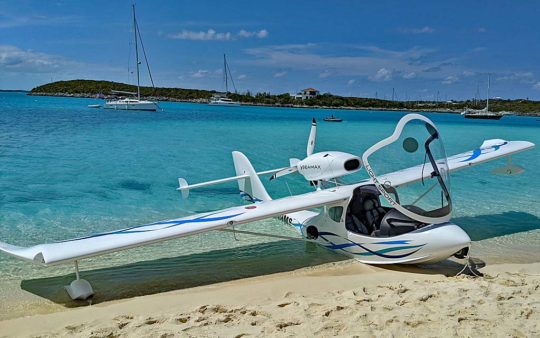 Today, regretfully, the Seamax company is going through some very difficult circumstances as noted in this
Today, regretfully, the Seamax company is going through some very difficult circumstances as noted in this 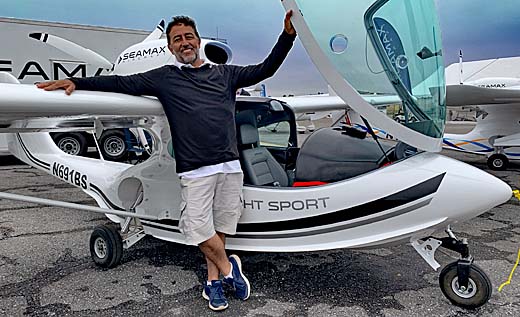
 Seamax (
Seamax (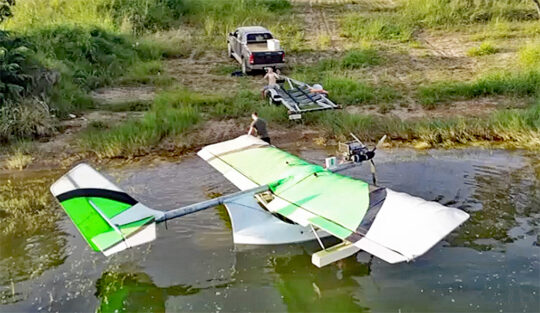
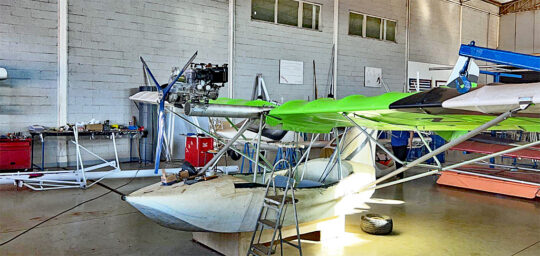
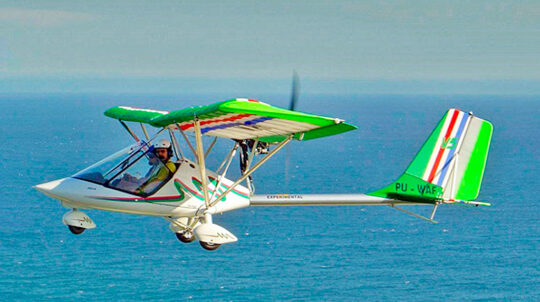 While Seamax design Miguel Rosario admits the business part of aircraft building is not his forte, this prolific designer is one of those types who can't sit still while the bean counters sort out Seamax, Inc.
"I am still working in airplane design (and race cars)," Miguel recently wrote via email. "I just developed a new amphibian that should have a low cost."
While Seamax design Miguel Rosario admits the business part of aircraft building is not his forte, this prolific designer is one of those types who can't sit still while the bean counters sort out Seamax, Inc.
"I am still working in airplane design (and race cars)," Miguel recently wrote via email. "I just developed a new amphibian that should have a low cost."
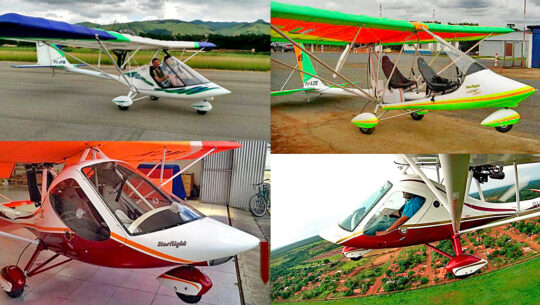 "I want to share with you the Duck, a design specially made for a Brazilian company called Fly Fox, located in Goiania, Brazil." Miguel cautioned, "So far, the info I am sharing with you… is for your personal information." He promised to supply more details; when I hear more I'll pass it along.
Fly Fox is the manufacturer of the Fox ultralight family consisting of V4, V5, and V6 (nearby images). Miguel noted that for the last 20 years, Fly Fox has been successfully manufacturing kit-built ultralights. "In manufacturing quality and flight characteristics, these are very good aircraft," Miguel expressed.
"I want to share with you the Duck, a design specially made for a Brazilian company called Fly Fox, located in Goiania, Brazil." Miguel cautioned, "So far, the info I am sharing with you… is for your personal information." He promised to supply more details; when I hear more I'll pass it along.
Fly Fox is the manufacturer of the Fox ultralight family consisting of V4, V5, and V6 (nearby images). Miguel noted that for the last 20 years, Fly Fox has been successfully manufacturing kit-built ultralights. "In manufacturing quality and flight characteristics, these are very good aircraft," Miguel expressed.
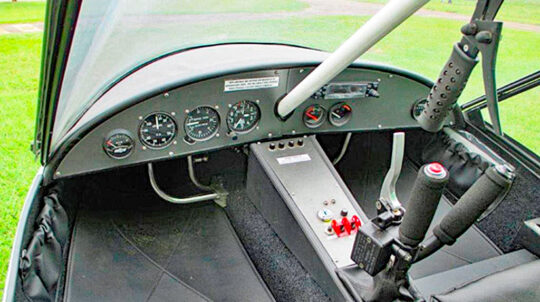 He continued, "What I made is a 'reassembled' Fox V5, using same wings and tail, repositioning
the boom on top, installing the engine in tractor position, and adding a small composite boat hull."
"The flight test program is finished," Miguel declared, "and Fly Fox is now preparing for production."
He continued, "What I made is a 'reassembled' Fox V5, using same wings and tail, repositioning
the boom on top, installing the engine in tractor position, and adding a small composite boat hull."
"The flight test program is finished," Miguel declared, "and Fly Fox is now preparing for production."
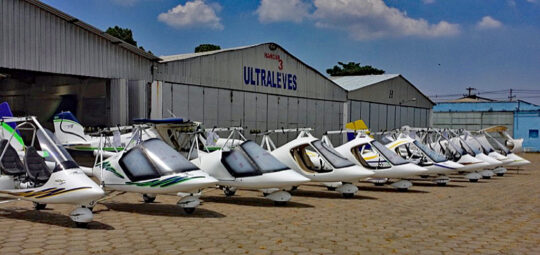 "[In the last] year, we developed manufacturing templates, where all parts, without exception, are drilled in the same pattern. We made improvements to the aircraft, such as tanks on the wings, laminar landing gear, Celeron pulleys, lighter fairings due to improved resin quality and several other improvements. During this time, parts were manufactured for the kits, today designed in Solid Works, finished with CNC and water cutting. All tubes are made of 6061-T6 aluminum, manufactured under strict quality control."
"Fox V5 Super Neo is an ultralight built side by side for the pilot who wants the "open cockpit feel." [With] the strength and safety of the Fox line, and with its docile controls, low stall speed and configuration of an aircraft with unsurpassed flight quality, V5 Super Neo will certainly be the choice for the adventurous aviator."
"[In the last] year, we developed manufacturing templates, where all parts, without exception, are drilled in the same pattern. We made improvements to the aircraft, such as tanks on the wings, laminar landing gear, Celeron pulleys, lighter fairings due to improved resin quality and several other improvements. During this time, parts were manufactured for the kits, today designed in Solid Works, finished with CNC and water cutting. All tubes are made of 6061-T6 aluminum, manufactured under strict quality control."
"Fox V5 Super Neo is an ultralight built side by side for the pilot who wants the "open cockpit feel." [With] the strength and safety of the Fox line, and with its docile controls, low stall speed and configuration of an aircraft with unsurpassed flight quality, V5 Super Neo will certainly be the choice for the adventurous aviator."
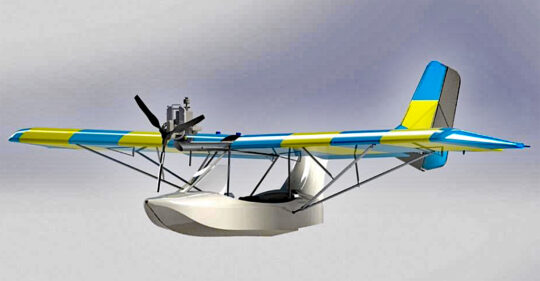
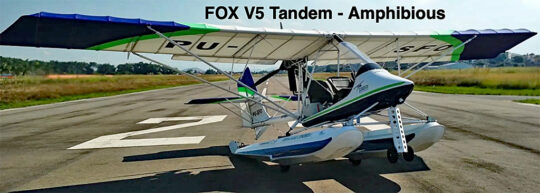
 This video was composed from clips sent by Miguel Rosario in June 2024. The finished Duck may look different than seen in this proof-of-concept aircraft. It is seen here making its maiden flight.
https://youtu.be/2Hx812gqiuY
This video was composed from clips sent by Miguel Rosario in June 2024. The finished Duck may look different than seen in this proof-of-concept aircraft. It is seen here making its maiden flight.
https://youtu.be/2Hx812gqiuY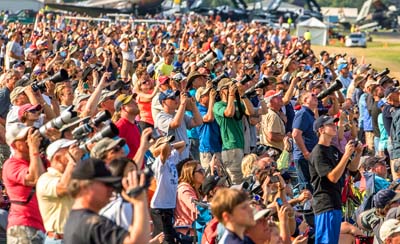 Sure, Sun 'n Fun, Aero Friedrichshafen, and AirVenture Oshkosh are far larger… and that's the problem. Size does matter but not always the way you think.
Sure, Sun 'n Fun, Aero Friedrichshafen, and AirVenture Oshkosh are far larger… and that's the problem. Size does matter but not always the way you think.
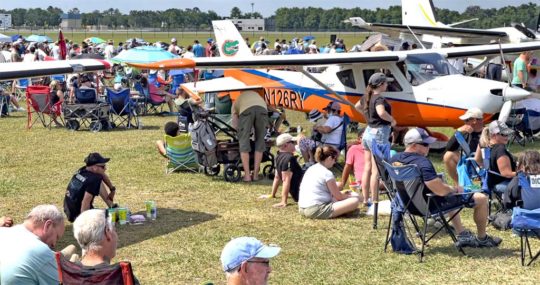 At these wonderfully huge events, you have so much to see and so many people to talk to that you cannot get to everyone. When you do end up in the front of a waiting line to talk to a vendor, you may have be quick as many others are waiting and the vendor wants to serve all the customers he or she can. The sheer size of these events also means literally miles of walking on some days. I don't even want to mention the lines of plastic portapottys baking in the sun. Whew!
Instead, come relax in Mt. Vernon (KMVN), now the longest-running light aviation-focused event in the country. Yep, this is their 16th year, making it the grandaddy of such events.
At these wonderfully huge events, you have so much to see and so many people to talk to that you cannot get to everyone. When you do end up in the front of a waiting line to talk to a vendor, you may have be quick as many others are waiting and the vendor wants to serve all the customers he or she can. The sheer size of these events also means literally miles of walking on some days. I don't even want to mention the lines of plastic portapottys baking in the sun. Whew!
Instead, come relax in Mt. Vernon (KMVN), now the longest-running light aviation-focused event in the country. Yep, this is their 16th year, making it the grandaddy of such events.
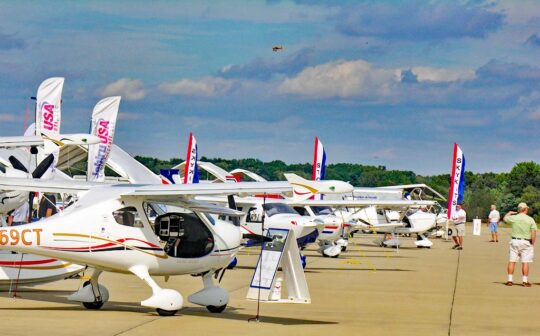 Comfortably after Oshkosh, on September 5-6-7, 2024, Midwest Aviation Expo is a calm and thoroughly enjoyable gathering. They've selected this date carefully and weather has usually been excellent. The area around the airport is wide open, very accommodating of demo flights.
Comfortably after Oshkosh, on September 5-6-7, 2024, Midwest Aviation Expo is a calm and thoroughly enjoyable gathering. They've selected this date carefully and weather has usually been excellent. The area around the airport is wide open, very accommodating of demo flights.
 "Several Sponsorships and Partnerships are in place and some 9-10 new Exhibitors are registered," said lead organizer Jana Filip. Vendors commonly return year after year; see articles below. "Chris Collins will be going to Oshkosh to promote the event."
"Several Sponsorships and Partnerships are in place and some 9-10 new Exhibitors are registered," said lead organizer Jana Filip. Vendors commonly return year after year; see articles below. "Chris Collins will be going to Oshkosh to promote the event."
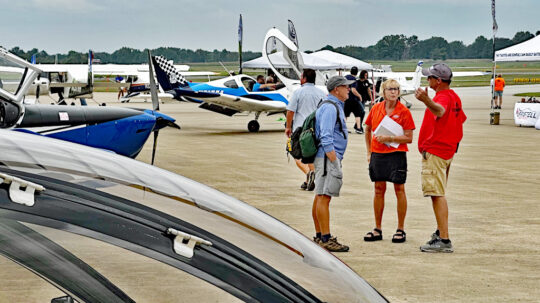
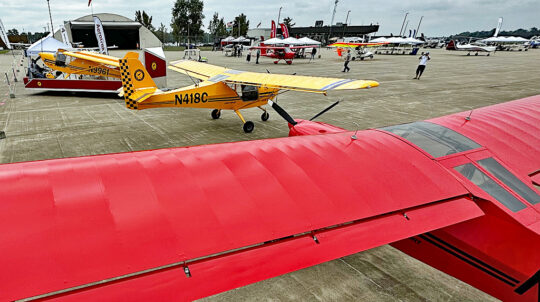 Rebadged for 2024,
Rebadged for 2024,  I know, I know… if you are a vendor, you're so busy about now that stopping work to tell your story is often not a priority. I get it.
Yet in a mere five minutes of downtime, you could inform us generally of what you are preparing so we can try to check out your project at the big Wisconsin show.
I know, I know… if you are a vendor, you're so busy about now that stopping work to tell your story is often not a priority. I get it.
Yet in a mere five minutes of downtime, you could inform us generally of what you are preparing so we can try to check out your project at the big Wisconsin show.
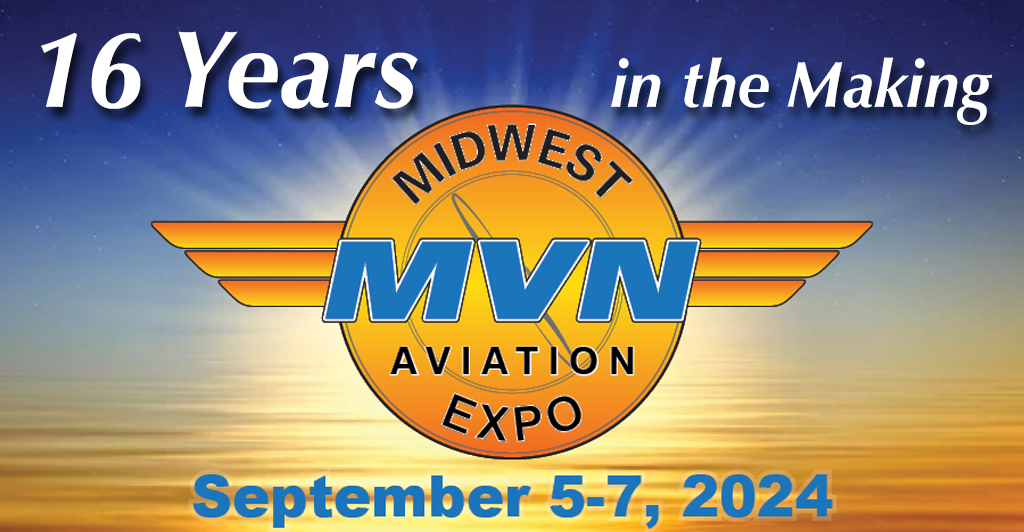
 "Buy an aircraft manufacturer with a certified product and also selling in the Light-Sport Aircraft class for, what? …£100 million? Try again and aim low: just over £12m ($15.3 million)," wrote Flyer staff.
The UK magazine reported that was the winning bid for the assets of Icon but continue reading.
"£134m ($170m) worth of debt was written off during the bankruptcy case for Icon Aircraft when it came before Judge Craig Goldblatt in Delaware last week," wrote Flyer.
"Buy an aircraft manufacturer with a certified product and also selling in the Light-Sport Aircraft class for, what? …£100 million? Try again and aim low: just over £12m ($15.3 million)," wrote Flyer staff.
The UK magazine reported that was the winning bid for the assets of Icon but continue reading.
"£134m ($170m) worth of debt was written off during the bankruptcy case for Icon Aircraft when it came before Judge Craig Goldblatt in Delaware last week," wrote Flyer.
 Dürkopp Adler Group describes itself as "a global innovation and technology leader in the field of industrial sewing. We develop, produce and sell high-quality sewing machines and equipment."
ByDanJohnson.com readers will
Dürkopp Adler Group describes itself as "a global innovation and technology leader in the field of industrial sewing. We develop, produce and sell high-quality sewing machines and equipment."
ByDanJohnson.com readers will 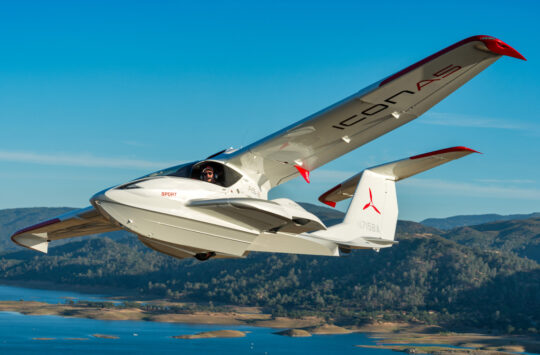 Flyer reported the opposition
Flyer reported the opposition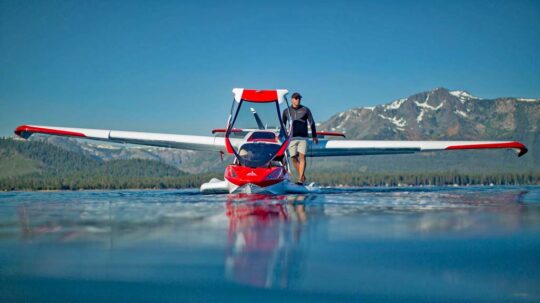 Law360 (paywall)
Law360 (paywall)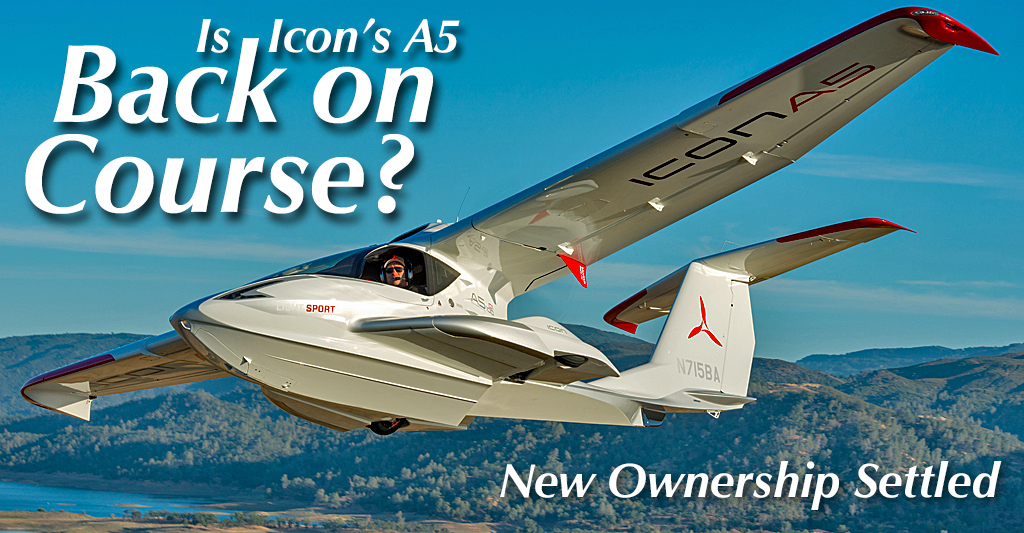
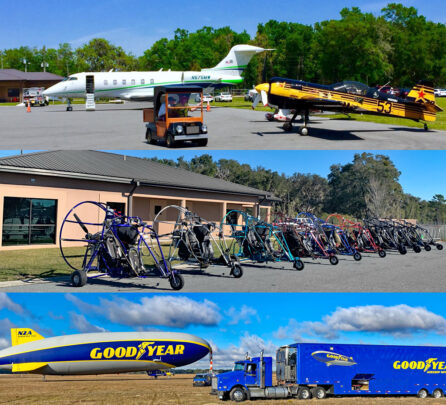
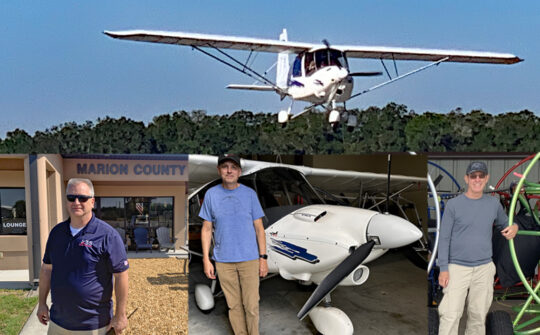
 Dunnellon is in Marion County, not Ocala but the close proximity helps both. Under airport manager (and pilot) Mike Grawe's leadership through the last six years, X35 has become a thriving facility with energetic new businesses sprouting up.
What may be most important is the presence of new, younger businessmen entering affordable aviation. People like me with decades of experience fill a useful role but we're like disappearing airline captains. We'll be moving on and entry-level aviation needs fresh blood. X35 put out the welcome mat… and it's working.
Dunnellon is in Marion County, not Ocala but the close proximity helps both. Under airport manager (and pilot) Mike Grawe's leadership through the last six years, X35 has become a thriving facility with energetic new businesses sprouting up.
What may be most important is the presence of new, younger businessmen entering affordable aviation. People like me with decades of experience fill a useful role but we're like disappearing airline captains. We'll be moving on and entry-level aviation needs fresh blood. X35 put out the welcome mat… and it's working.

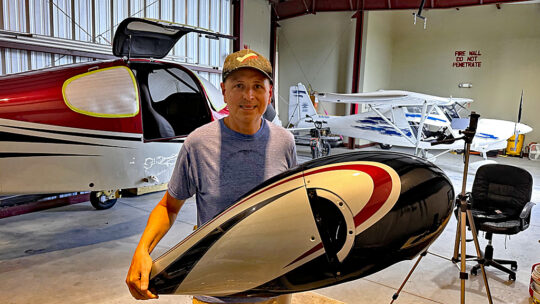


 Randy has taken over an existing operation, is preserving the originator's names
Randy has taken over an existing operation, is preserving the originator's names 
 These two new businesses join the veterans at X35 adding to the success Mike Grawe has been building.
Central-northwestern Florida and its fancy equestrian ranches exist alongside a vibrant
These two new businesses join the veterans at X35 adding to the success Mike Grawe has been building.
Central-northwestern Florida and its fancy equestrian ranches exist alongside a vibrant 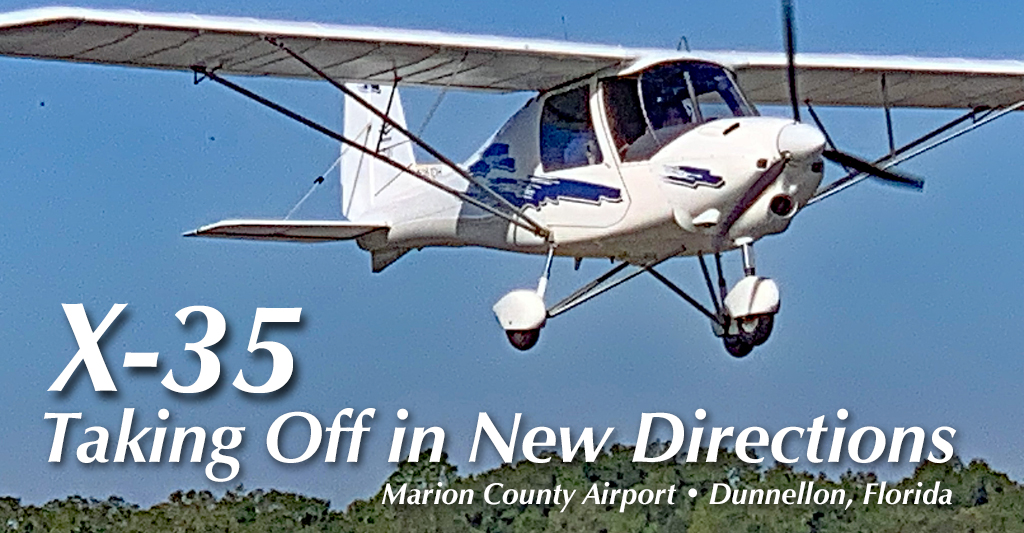
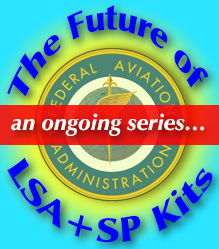 According to
According to 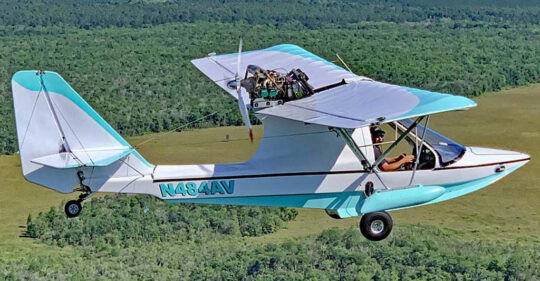 OK, let's come back to Earth… or water perhaps …or either. Aero Adventure continues to fly as it has for three decades (though management has changed at least three times over the period). For a tiny fraction of $13.5 million, much less $170 million, Aero Adventure has built a line of aircraft, including kit versions and an SLSA version. They've also offered the
OK, let's come back to Earth… or water perhaps …or either. Aero Adventure continues to fly as it has for three decades (though management has changed at least three times over the period). For a tiny fraction of $13.5 million, much less $170 million, Aero Adventure has built a line of aircraft, including kit versions and an SLSA version. They've also offered the 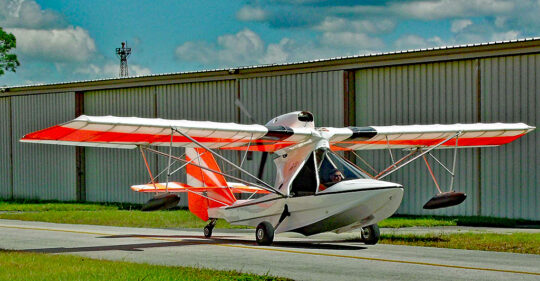
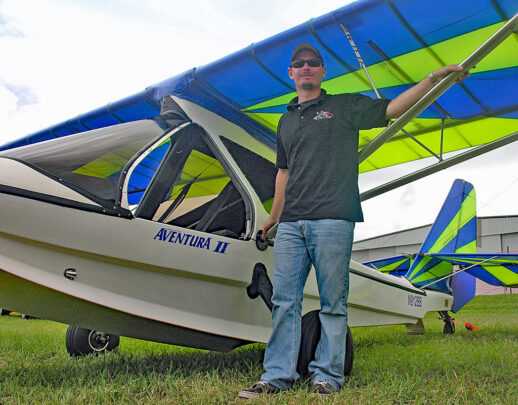
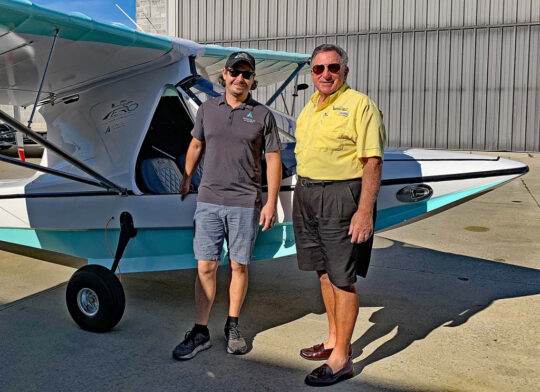
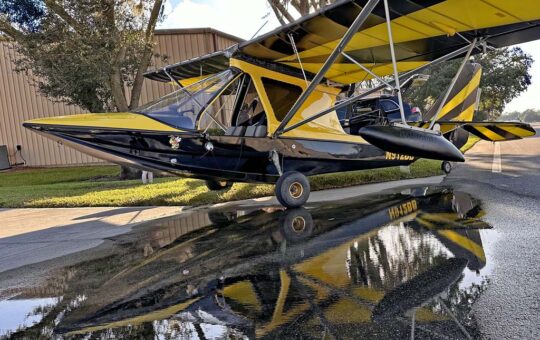 The U.S. operation of Aero Affinity ranges widely through the light aircraft space and has entered somewhat larger aviation, no doubt a good direction to be going as we contemplate Mosaic LSA that require new expertise for equipment like retractable gear, adjustable props, alternate propulsion systems, and more. Last year Alex took factory training by
The U.S. operation of Aero Affinity ranges widely through the light aircraft space and has entered somewhat larger aviation, no doubt a good direction to be going as we contemplate Mosaic LSA that require new expertise for equipment like retractable gear, adjustable props, alternate propulsion systems, and more. Last year Alex took factory training by  As to affordability
As to affordability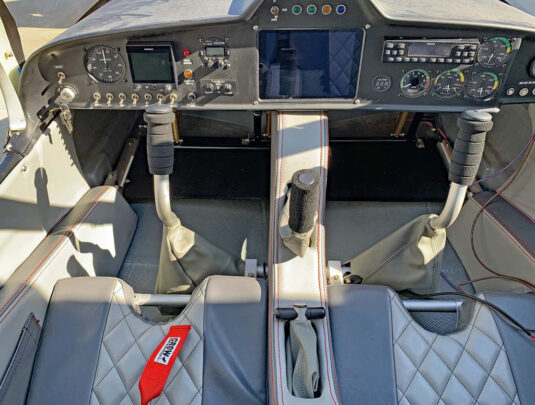 To hold prices from soaring even higher, this move by Aero Adventure makes economic sense. I'd bet they can also add new sales from South America.
Regardless of price questions, Aero Adventure appears to be one of the steadiest producers in the LSA seaplane sector along with Scoda Aeronautica and their
To hold prices from soaring even higher, this move by Aero Adventure makes economic sense. I'd bet they can also add new sales from South America.
Regardless of price questions, Aero Adventure appears to be one of the steadiest producers in the LSA seaplane sector along with Scoda Aeronautica and their 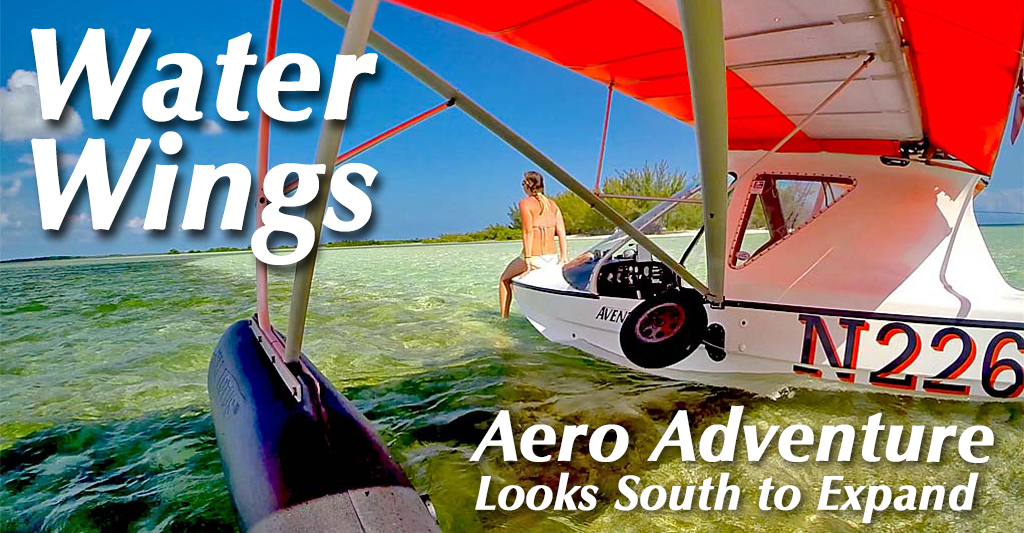

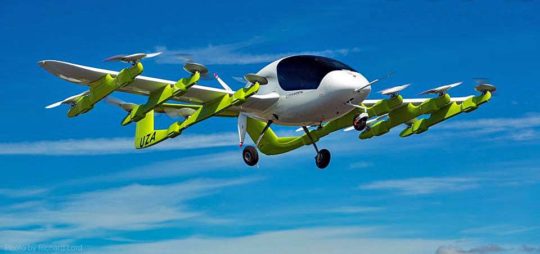 In our exchange, Tai and I agreed that the idea of eVTOLs may be technically achievable now, at least to some range of operation, but public acceptance of this aircraft development may still take years.
Meanwhile… Icon and its sleek A5 will continue in operation, the company has assured. Other sources I consulted were dubious about the $13.5 million investment being enough to rescue Icon, given the weight of servicing all prior investments. Only in time will we know for sure.
Americans who own an A5 aircraft are in no jeopardy, Icon assures. Sales and service will continue.
In our exchange, Tai and I agreed that the idea of eVTOLs may be technically achievable now, at least to some range of operation, but public acceptance of this aircraft development may still take years.
Meanwhile… Icon and its sleek A5 will continue in operation, the company has assured. Other sources I consulted were dubious about the $13.5 million investment being enough to rescue Icon, given the weight of servicing all prior investments. Only in time will we know for sure.
Americans who own an A5 aircraft are in no jeopardy, Icon assures. Sales and service will continue.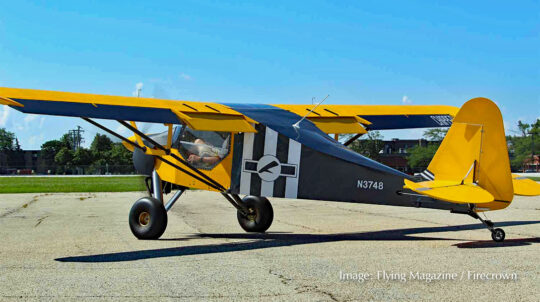 James came to aviation from the computer business, where the pace isn't fast — it's furious! Over the years Dave and I covered James and his output, we'd make a new video at every airshow, it seemed, as he had moved on from the last design to the next. That's what they do in the world of computers but it made pilots' heads spin.
James came to aviation from the computer business, where the pace isn't fast — it's furious! Over the years Dave and I covered James and his output, we'd make a new video at every airshow, it seemed, as he had moved on from the last design to the next. That's what they do in the world of computers but it made pilots' heads spin.
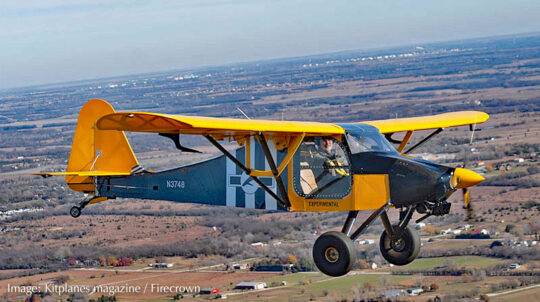 It also probably slowed sales because, as with computers, why buy this airplane when the next one will be even better?
It also probably slowed sales because, as with computers, why buy this airplane when the next one will be even better?
 James founded Belite and began with ideas about carbon fiber tube airframes. It was a marvelous, modern, even exotic idea but it was quite unorthodox for most builders. Plus, in those days, carbon fiber was expensive and a Part 103 aircraft needed to be affordable.
James went on to variations on the theme changing so frequently that he produced few or none of the development models. While he may not have sold large numbers, his fast progress kept the curiosity of pilots sky high. He regularly drew crowds at events.
A caffein-stimulated fury of designs finally seemed to settle down when
James founded Belite and began with ideas about carbon fiber tube airframes. It was a marvelous, modern, even exotic idea but it was quite unorthodox for most builders. Plus, in those days, carbon fiber was expensive and a Part 103 aircraft needed to be affordable.
James went on to variations on the theme changing so frequently that he produced few or none of the development models. While he may not have sold large numbers, his fast progress kept the curiosity of pilots sky high. He regularly drew crowds at events.
A caffein-stimulated fury of designs finally seemed to settle down when 
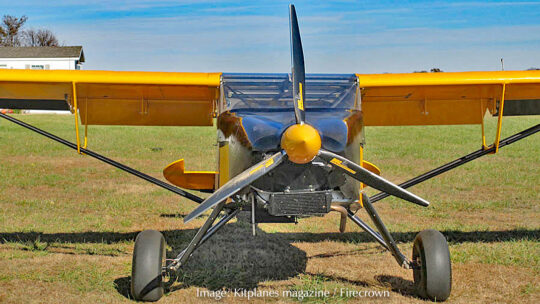 The pair is at an early stage of the development in this project. SkyKicker's website is in process. However, given a design that has already proven itself, and adding the high level of energy Nick and Charlotte are bringing to the task, I doubt it will be long before Chipper becomes a product on the market.
Until their business is fully established, you can contact them by
The pair is at an early stage of the development in this project. SkyKicker's website is in process. However, given a design that has already proven itself, and adding the high level of energy Nick and Charlotte are bringing to the task, I doubt it will be long before Chipper becomes a product on the market.
Until their business is fully established, you can contact them by 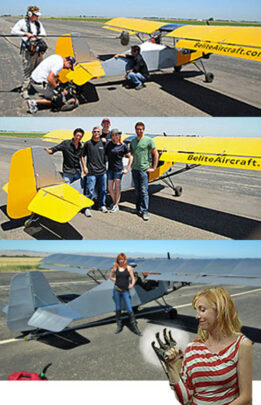 The episode discussed how an Alaska pilot had repaired his aircraft after a bear attacked it and clawed the fabric covering in several places (see simulated bear claw). The pilot made repairs with — you guessed it! — duct tape, and flew home successfully.
To test this pilot's claim in their characteristic manner, the Myth Busters team got one of James' airplanes and covered every cloth surface using duct tape (genuine image, not Photoshopped). James successfully flew it for them, though "not very long and not very high."
The show generated so much interest that Belite's website crashed for a few hours.
The episode discussed how an Alaska pilot had repaired his aircraft after a bear attacked it and clawed the fabric covering in several places (see simulated bear claw). The pilot made repairs with — you guessed it! — duct tape, and flew home successfully.
To test this pilot's claim in their characteristic manner, the Myth Busters team got one of James' airplanes and covered every cloth surface using duct tape (genuine image, not Photoshopped). James successfully flew it for them, though "not very long and not very high."
The show generated so much interest that Belite's website crashed for a few hours.

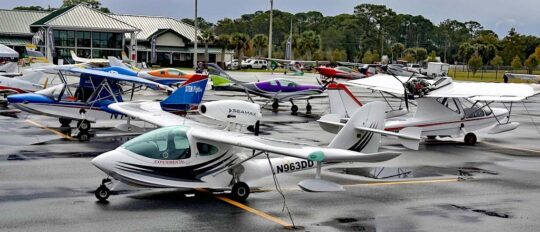 LSA seaplanes constitute a highly fluid market yet we can see clues suggesting what might be ahead for some of the main brands. With summertime approaching, this State-of-the-Sector article attempts to keep up with the rapidly changing landscape (or waterscape).
LSA seaplanes constitute a highly fluid market yet we can see clues suggesting what might be ahead for some of the main brands. With summertime approaching, this State-of-the-Sector article attempts to keep up with the rapidly changing landscape (or waterscape).
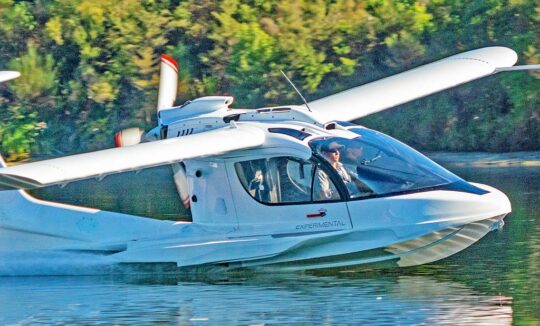 We'll first look at two high-end entries that have been in the news and conclude with present LSA seaplanes and their status in the market.
We'll first look at two high-end entries that have been in the news and conclude with present LSA seaplanes and their status in the market.
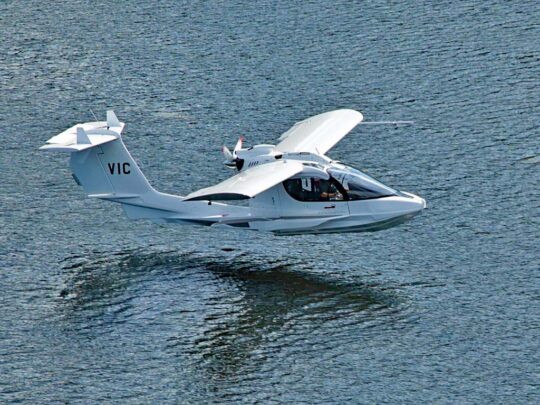 Russ continued, "Founder Paul Vickers said the company is now raising capital to fund the push to begin deliveries on its backlog."
Vickers added, "The plane has finished its flight testing and shook out with a 120-knot cruise and useful load of 750 pounds with a Rotax 916 iS pushing it along."
Paul said the company is planning to manufacture Wave in the U.S. "Most current investors are Americans," Paul noted. A U.S. customer will receive the first Wave.
Russ continued, "Founder Paul Vickers said the company is now raising capital to fund the push to begin deliveries on its backlog."
Vickers added, "The plane has finished its flight testing and shook out with a 120-knot cruise and useful load of 750 pounds with a Rotax 916 iS pushing it along."
Paul said the company is planning to manufacture Wave in the U.S. "Most current investors are Americans," Paul noted. A U.S. customer will receive the first Wave.
 Wave has had a long development cycle but their timing with Mosaic approaching next year looks prescient.
Wave has had a long development cycle but their timing with Mosaic approaching next year looks prescient.
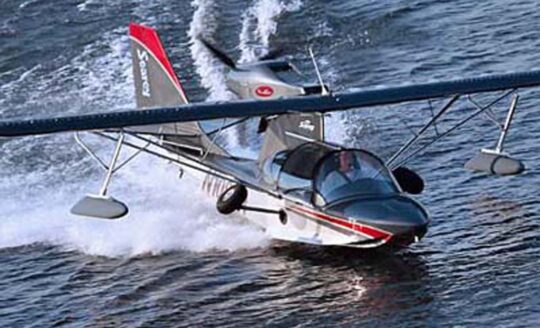 However, Searey won
However, Searey won 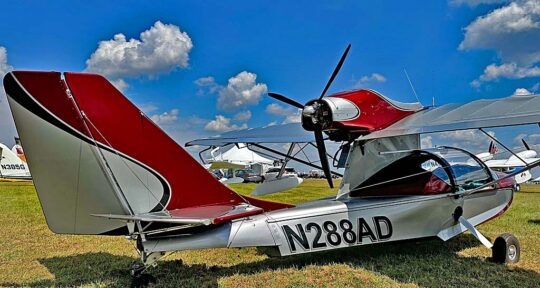 According to a party I know to be reliable, new buyers are ready and have proposed to reacquire the onetime American company. Even original designer Kerry Ritcher is said to be part of the group interested in taking over from the Chinese. While plans remain uncertain, an American group could quickly breathe life back into a moribund brand. In recent years, the company's appearance at airshows was modest and unenthusiastic. Over the last year, no one has answered the phones. Now the factory is shuttered.
Under lock without access, Progressive Aerodyne is reportedly packed into containers in their former factory, while the rent continues unpaid. It looks dire, but a moderately-well-funded investor group could get up and running fairly quickly, it was imagined. The parts business alone has sustained the company and offers a route back to normal operation; reviving that would be a relief to current Searey owners. Action will depend on current ownership making a decision; when that may happen is not known.
Yet combined with the original talent that created this popular LSA seaplane, new investors could quickly brighten those cloudy skies.
According to a party I know to be reliable, new buyers are ready and have proposed to reacquire the onetime American company. Even original designer Kerry Ritcher is said to be part of the group interested in taking over from the Chinese. While plans remain uncertain, an American group could quickly breathe life back into a moribund brand. In recent years, the company's appearance at airshows was modest and unenthusiastic. Over the last year, no one has answered the phones. Now the factory is shuttered.
Under lock without access, Progressive Aerodyne is reportedly packed into containers in their former factory, while the rent continues unpaid. It looks dire, but a moderately-well-funded investor group could get up and running fairly quickly, it was imagined. The parts business alone has sustained the company and offers a route back to normal operation; reviving that would be a relief to current Searey owners. Action will depend on current ownership making a decision; when that may happen is not known.
Yet combined with the original talent that created this popular LSA seaplane, new investors could quickly brighten those cloudy skies.
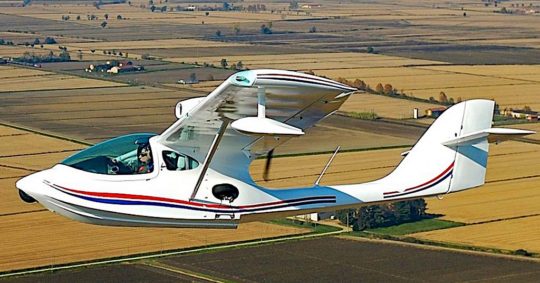 "The company owes several million dollars to creditors and customers," a reliable source told me. "Employees have voiced concerns and some are taking action." Seamax leaders have reportedly managed to keep their core team using "informal payments."
"In North America, the Brazilian company allegedly has more than a dozen orders to fulfill, to customers that have made substantial deposits." The prognosis for those deliveries is unknown, though the company reportedly delivered one aircraft to America recently using unorthodox channels.
"The company owes several million dollars to creditors and customers," a reliable source told me. "Employees have voiced concerns and some are taking action." Seamax leaders have reportedly managed to keep their core team using "informal payments."
"In North America, the Brazilian company allegedly has more than a dozen orders to fulfill, to customers that have made substantial deposits." The prognosis for those deliveries is unknown, though the company reportedly delivered one aircraft to America recently using unorthodox channels.
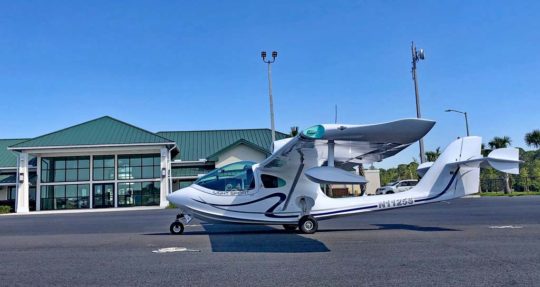 While “buyer beware” is always good advice, one thing I've learned from decades of reporting on this particular sector of aviation: Never write off a worthy design as dead and gone. I've seen many popular aircraft such as Seamax return after internal reforms or under new leadership..
While “buyer beware” is always good advice, one thing I've learned from decades of reporting on this particular sector of aviation: Never write off a worthy design as dead and gone. I've seen many popular aircraft such as Seamax return after internal reforms or under new leadership..
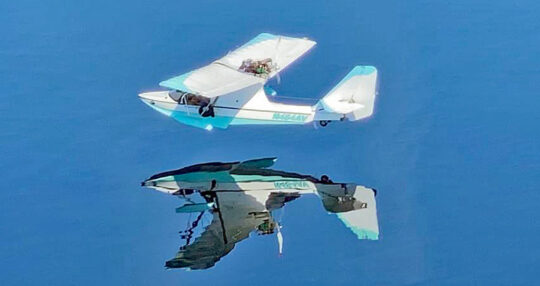 Let's do this up front: the price of a ready-to-ship kit is $59,900. It's available today.
"Due to enhancements in our production capabilities," Aero Adventure stated in a recent mailing, "we produced an additional kit beyond our standard production last month (April, 2024), which is now available for purchase!"
Compare a low price and immediate delivery to any of the aircraft above. It seems like an earlier time when people could actually afford stuff and dealers had products in-stock, ready to deliver. Of course, you'll have to add an engine, avionics, and you might want to doll up the interior but the base price is righteous.
For not much more than $100,000 you could be airborne in a brand-new, well-proven seaplane from a stable manufacturer that is growing their enterprise. Given almost everything you buy has doubled in price during the 2020s, Aventura seems a genuine bargain in 2024.
Let's do this up front: the price of a ready-to-ship kit is $59,900. It's available today.
"Due to enhancements in our production capabilities," Aero Adventure stated in a recent mailing, "we produced an additional kit beyond our standard production last month (April, 2024), which is now available for purchase!"
Compare a low price and immediate delivery to any of the aircraft above. It seems like an earlier time when people could actually afford stuff and dealers had products in-stock, ready to deliver. Of course, you'll have to add an engine, avionics, and you might want to doll up the interior but the base price is righteous.
For not much more than $100,000 you could be airborne in a brand-new, well-proven seaplane from a stable manufacturer that is growing their enterprise. Given almost everything you buy has doubled in price during the 2020s, Aventura seems a genuine bargain in 2024.
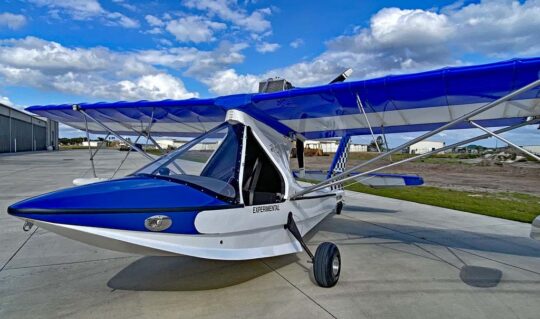 If you believe it's worth a closer look,
If you believe it's worth a closer look,  I have often written about many seaworthy aircraft and invite you to
I have often written about many seaworthy aircraft and invite you to 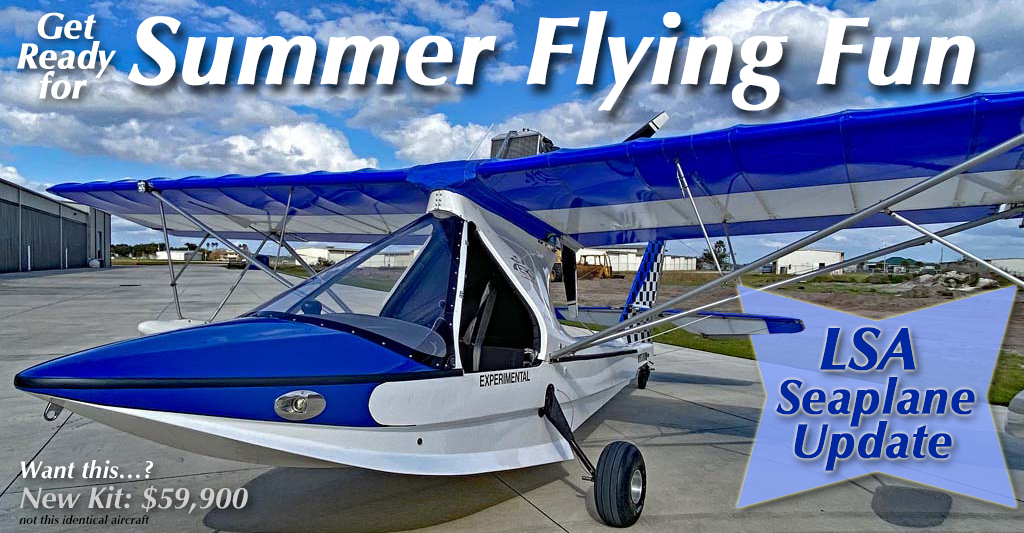
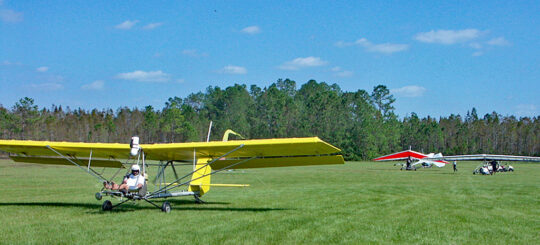 Throughout the '70s, hang glider designs accelerated smartly in glide performance and sink rate, stretching from slope-hugging 4:1 triangular-shaped wings to elegantly long and slender "bladewings" that could exceed a 20:1 glide yet remain foot-launchable and still be an aircraft you could carry on your shoulder (when folded down). Passionate enthusiasts thrilled to a 5X performance improvement in a decade or so.
Throughout the '70s, hang glider designs accelerated smartly in glide performance and sink rate, stretching from slope-hugging 4:1 triangular-shaped wings to elegantly long and slender "bladewings" that could exceed a 20:1 glide yet remain foot-launchable and still be an aircraft you could carry on your shoulder (when folded down). Passionate enthusiasts thrilled to a 5X performance improvement in a decade or so.
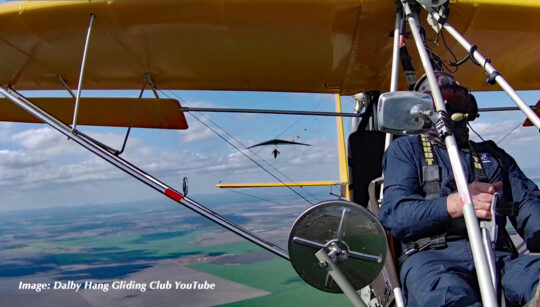 In the beginning, most pilots launched off mountains to get enough height to catch thermals. Yet lots of America doesn't have mountainous terrain. Florida had plenty of pilots eager to fly hang gliders but to find the best soaring, they had to load up their gliders and drive 10-12 hours to the hills of Tennessee where flight park operators like me catered to them with mountain launch sites. At home they did boat towing regularly but that rarely got them high enough to catch thermals. One Florida man dreamed of a solution.
In the beginning, most pilots launched off mountains to get enough height to catch thermals. Yet lots of America doesn't have mountainous terrain. Florida had plenty of pilots eager to fly hang gliders but to find the best soaring, they had to load up their gliders and drive 10-12 hours to the hills of Tennessee where flight park operators like me catered to them with mountain launch sites. At home they did boat towing regularly but that rarely got them high enough to catch thermals. One Florida man dreamed of a solution.
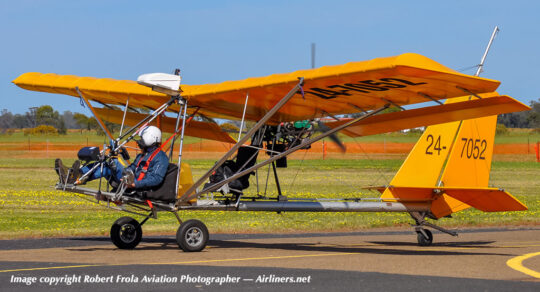
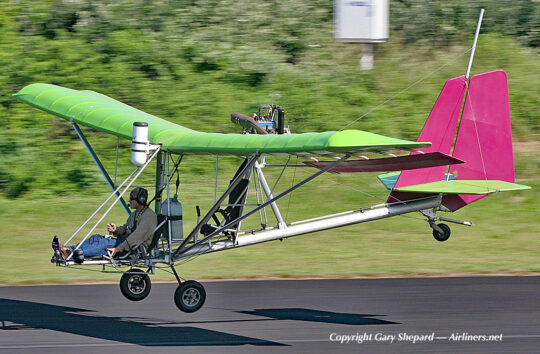
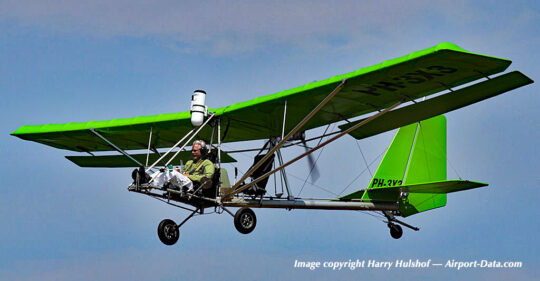
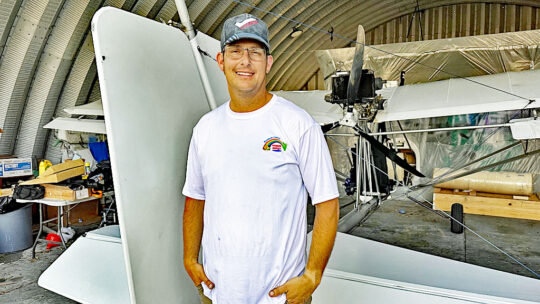 This central-northwestern area is home to fancy equestrian ranches and the spacious airport has begun to thrive from light aircraft operations. Airport manager Mike Grawe supported by industry expert Roy Beisswenger and airfield entrepreneur Troy Townsend welcomed Randy Dorsey along with another business setting up to build the former Belite Chipper 2, the latter operated by husband-and-wife team Nick and Charlotte Jones. Along with two powered parachute operations and 40 brand-new T-hangars (sorry, already fully booked), X35 looks alive and thriving.
Learn more about plans for Dragonfly back home in Florida in the video below. You can also read several articles below from my earlier reporting.
This central-northwestern area is home to fancy equestrian ranches and the spacious airport has begun to thrive from light aircraft operations. Airport manager Mike Grawe supported by industry expert Roy Beisswenger and airfield entrepreneur Troy Townsend welcomed Randy Dorsey along with another business setting up to build the former Belite Chipper 2, the latter operated by husband-and-wife team Nick and Charlotte Jones. Along with two powered parachute operations and 40 brand-new T-hangars (sorry, already fully booked), X35 looks alive and thriving.
Learn more about plans for Dragonfly back home in Florida in the video below. You can also read several articles below from my earlier reporting.
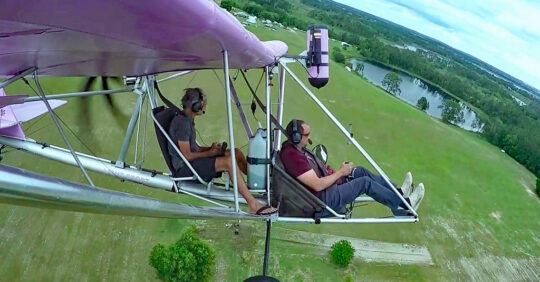 Is It Affordable?
Is It Affordable?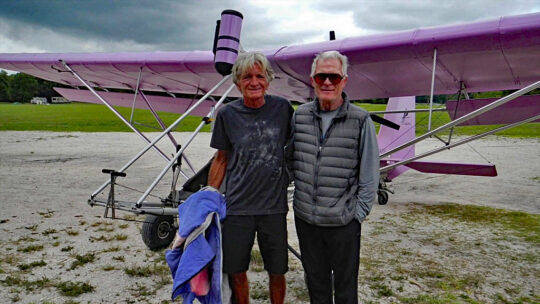 A man of highly innovative design but very few words, many knew Bobby for years yet learned little about him. He was rarely one to talk about himself in public settings. I always figured that much of the time he was designing the next aircraft in his mind.
A celebration of his life is planned for Sunday, May 26th, 2024 at 6548 Groveland Airport Rd, Groveland, FL 34736 — the airport Bobby called home for decades.
Florida and southeastern U.S. pilots who knew him can gather to share personal details and tell tall stories of Bobby's numerous flying exploits.
A man of highly innovative design but very few words, many knew Bobby for years yet learned little about him. He was rarely one to talk about himself in public settings. I always figured that much of the time he was designing the next aircraft in his mind.
A celebration of his life is planned for Sunday, May 26th, 2024 at 6548 Groveland Airport Rd, Groveland, FL 34736 — the airport Bobby called home for decades.
Florida and southeastern U.S. pilots who knew him can gather to share personal details and tell tall stories of Bobby's numerous flying exploits. 
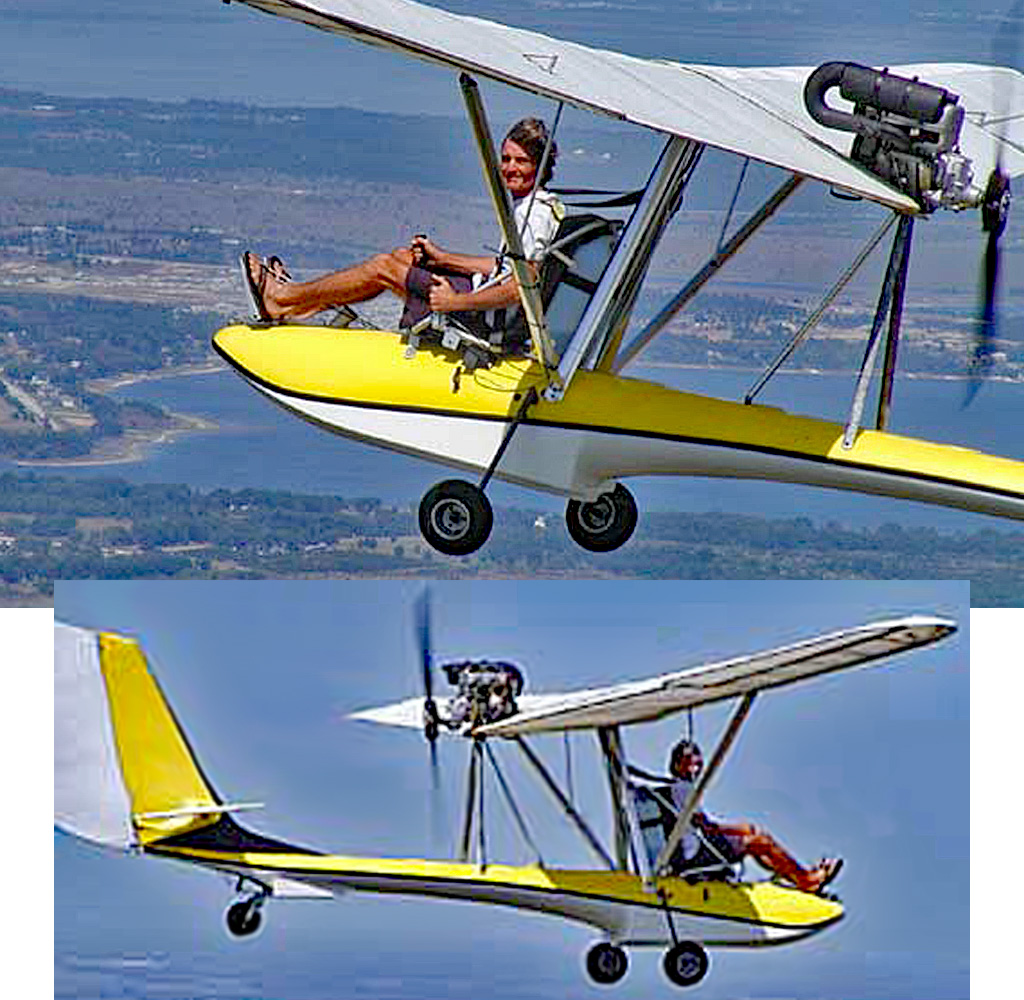
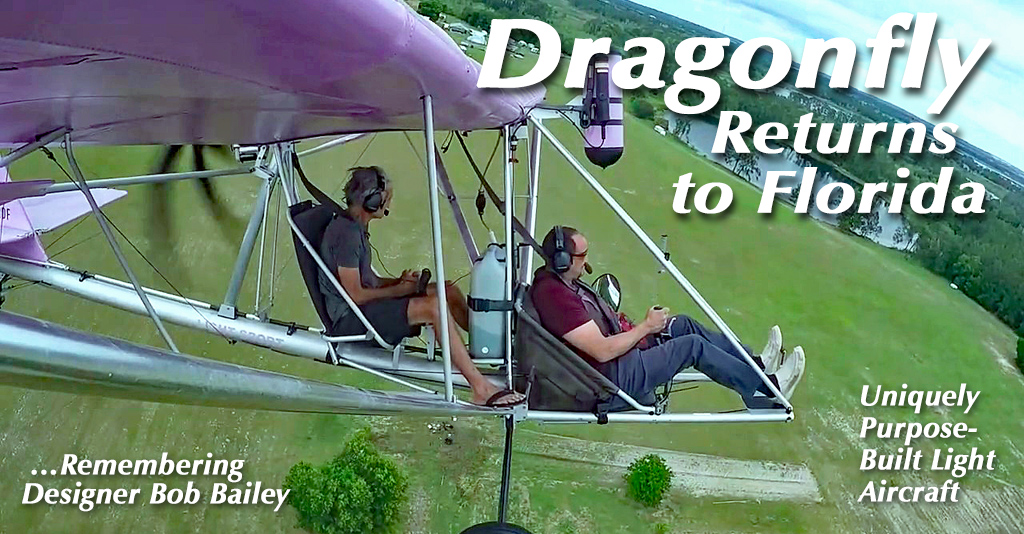
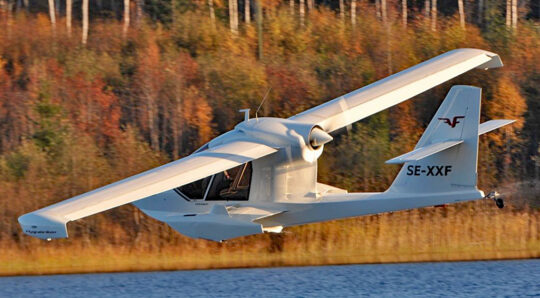 It isn't only that seaplanes can offer "triphibian" capabilities (a term once promoted by
It isn't only that seaplanes can offer "triphibian" capabilities (a term once promoted by 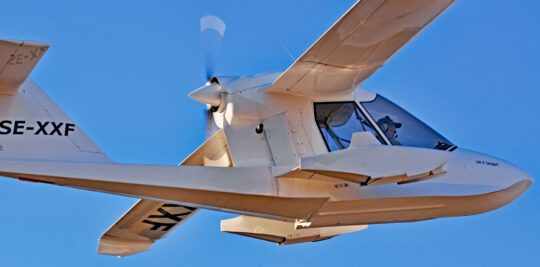 Now from
Now from  "In 2007 we displayed the airplane with a rollout in the local concert hall, Tonhallen in Sundsvall," he continued. "We flew for the first time in 2008." He observed that they are still flying that same aircraft and the team believes they have this well sorted out and are ready for market.
In an earlier iteration, Seagull used a strutted wing with titanium landing gear powered by a Jabiru 2200 engine that output 81 horsepower. "Since then the design has evolved," Staffan said, "and today LN-3 Seagull has a cantilevered wing that is easily removed." Carbon fiber is used in most of the construction including the landing gear. The engine selections now feature Rotax or D-Motor.
"In 2007 we displayed the airplane with a rollout in the local concert hall, Tonhallen in Sundsvall," he continued. "We flew for the first time in 2008." He observed that they are still flying that same aircraft and the team believes they have this well sorted out and are ready for market.
In an earlier iteration, Seagull used a strutted wing with titanium landing gear powered by a Jabiru 2200 engine that output 81 horsepower. "Since then the design has evolved," Staffan said, "and today LN-3 Seagull has a cantilevered wing that is easily removed." Carbon fiber is used in most of the construction including the landing gear. The engine selections now feature Rotax or D-Motor.
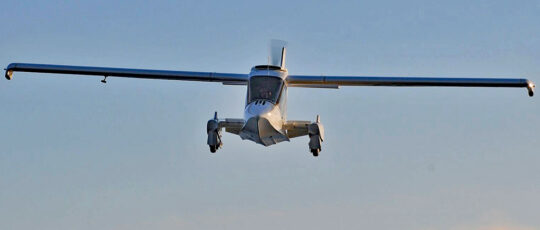 "We made a lot of modifications and have flown with three different engines," related Staffan. "Early in the process we replaced the strutted wing with a cantilever wing to offer easy mounting and dismounting of the wings. We made a trailer for ease of moving the airplane to and from the airfield."
Power has increased from the four cylinder Jabiru. "We have flown with the Rotax 914 Turbo plus a four-cylinder D-motor. We are currently using the
"We made a lot of modifications and have flown with three different engines," related Staffan. "Early in the process we replaced the strutted wing with a cantilever wing to offer easy mounting and dismounting of the wings. We made a trailer for ease of moving the airplane to and from the airfield."
Power has increased from the four cylinder Jabiru. "We have flown with the Rotax 914 Turbo plus a four-cylinder D-motor. We are currently using the 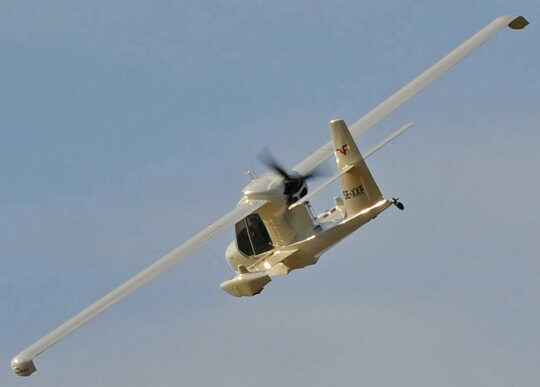 "All modifications were made to the original aircraft… [but we have now] finalized the design of the production airplane in 3D-CAD environment," Staffan clarified. We have made most of the molds (image) and will start producing kit airplanes in summer 2024. This start of production is a great milestone for us and, of course, is very exciting!"
After many flying hours have been logged, Staffan is clearly ready to get LN-3 Seagull on the market. "It's a nice flying airplane with very good performance and a totally unobstructed, hard-to-beat view from the cockpit," boasted Staffan.
"All modifications were made to the original aircraft… [but we have now] finalized the design of the production airplane in 3D-CAD environment," Staffan clarified. We have made most of the molds (image) and will start producing kit airplanes in summer 2024. This start of production is a great milestone for us and, of course, is very exciting!"
After many flying hours have been logged, Staffan is clearly ready to get LN-3 Seagull on the market. "It's a nice flying airplane with very good performance and a totally unobstructed, hard-to-beat view from the cockpit," boasted Staffan.
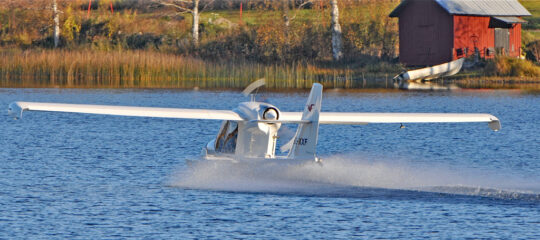 The airplane is equipped with conventional ailerons controlled with the stick via push-pull rods. The flap is of slotted type with a maximum extension of 45 degrees. A horizontal stabilizer and the elevator are controlled with the stick via push-pull rods. The rudder is controlled with pedals via cables and it extends to become a water rudder controlled with the pedals. Hinges on all control surfaces are of ball bearing type and the elevator is fully balanced.
LN-3 Seagull landing gear is composed of retractable main gear and a steerable tail wheel. The main gear legs are built of carbon fiber and euipped with a oleomatic spring/damper. Retractable gear are actuated mechanically with a lever in the cockpit.
The airplane is equipped with conventional ailerons controlled with the stick via push-pull rods. The flap is of slotted type with a maximum extension of 45 degrees. A horizontal stabilizer and the elevator are controlled with the stick via push-pull rods. The rudder is controlled with pedals via cables and it extends to become a water rudder controlled with the pedals. Hinges on all control surfaces are of ball bearing type and the elevator is fully balanced.
LN-3 Seagull landing gear is composed of retractable main gear and a steerable tail wheel. The main gear legs are built of carbon fiber and euipped with a oleomatic spring/damper. Retractable gear are actuated mechanically with a lever in the cockpit.
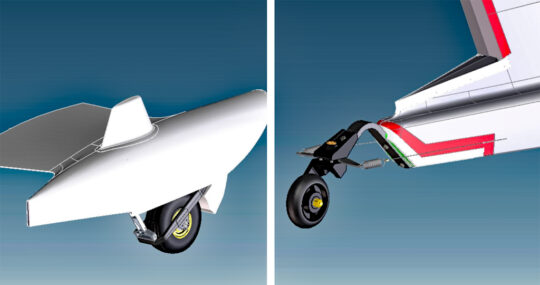 The fuselage consists of a hull built from aramid fibre and the rest of the fuselage is carbon fiber. Fuselage panels are of sandwich construction and behind the aft seat a main bulkhead with a metal truss distribute the loads from the fuselage to the wings. The cockpit floor is constructed to permit the hull to flex somewhat when landing on water.
LN-3's structure is robust as the manufacturer said, "The design is made in compliance with FAR 23 aerobatic category thus making the LN-3 permitted for aerobatic flying."
The fuselage consists of a hull built from aramid fibre and the rest of the fuselage is carbon fiber. Fuselage panels are of sandwich construction and behind the aft seat a main bulkhead with a metal truss distribute the loads from the fuselage to the wings. The cockpit floor is constructed to permit the hull to flex somewhat when landing on water.
LN-3's structure is robust as the manufacturer said, "The design is made in compliance with FAR 23 aerobatic category thus making the LN-3 permitted for aerobatic flying."
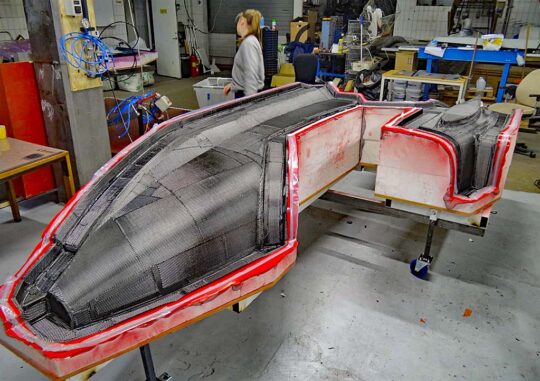 The fuel tank is placed in the fuselage and the filler neck is positioned under a lid on the left side. "This is an advantage compared to having wing tanks, especially when taxiing on water," noted Staffan. "The engine will have good fuel supply without the pilot having to monitor which tank is chosen."
"We have now opened our order book for LN-3 Seagull kits" said Staffan with clear excitement. "We are also looking for partners to present and sell the airplane outside of Sweden."
The fuel tank is placed in the fuselage and the filler neck is positioned under a lid on the left side. "This is an advantage compared to having wing tanks, especially when taxiing on water," noted Staffan. "The engine will have good fuel supply without the pilot having to monitor which tank is chosen."
"We have now opened our order book for LN-3 Seagull kits" said Staffan with clear excitement. "We are also looking for partners to present and sell the airplane outside of Sweden."
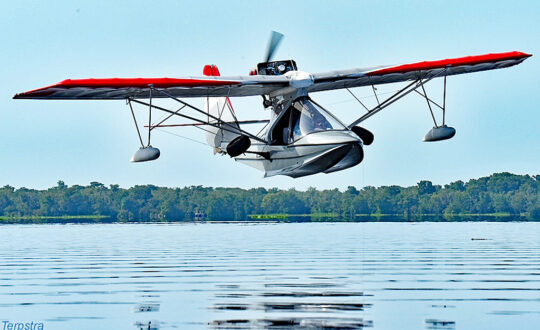
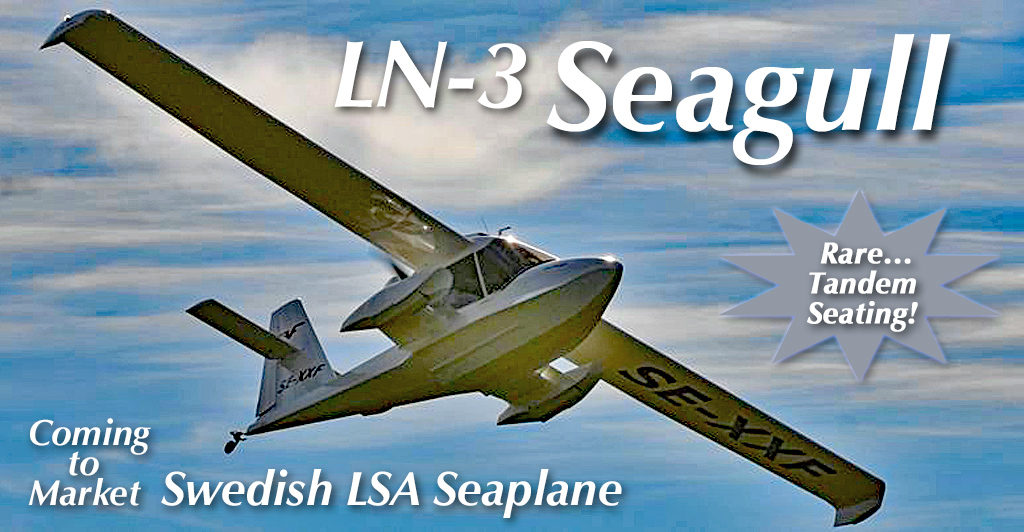
 So, it is already certain that I will conclude my full-time activities with ByDanJohnson.com on a very high note and I am grateful beyond what I can convey. I had hoped to "go out at the top of my game" and this strong response from visitors is a wonderful send-off.
So, it is already certain that I will conclude my full-time activities with ByDanJohnson.com on a very high note and I am grateful beyond what I can convey. I had hoped to "go out at the top of my game" and this strong response from visitors is a wonderful send-off.
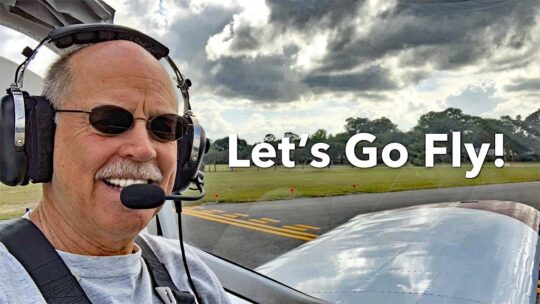 Please believe me, though, the genuine thanks are from me to you, not the other way around.
I am deeply appreciative of your loyal readership for these past 20 years. Thank you from the bottom of my pilot's heart.
Please believe me, though, the genuine thanks are from me to you, not the other way around.
I am deeply appreciative of your loyal readership for these past 20 years. Thank you from the bottom of my pilot's heart.
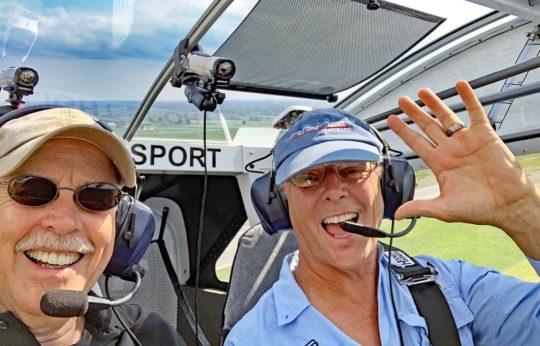
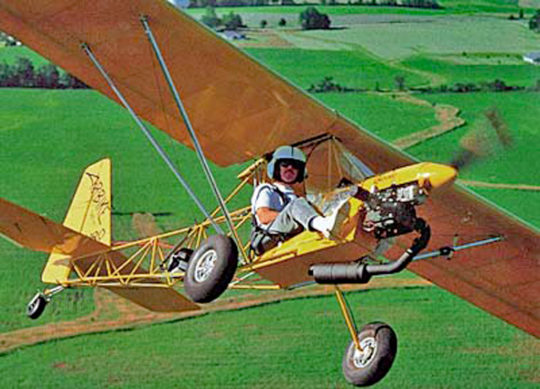
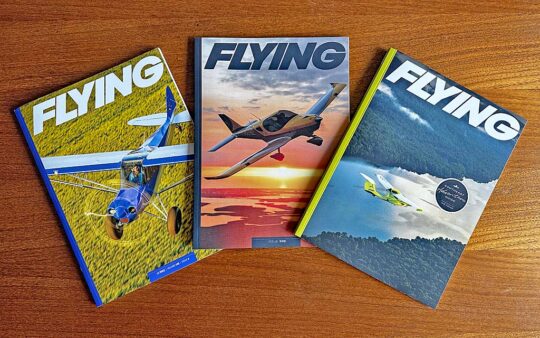
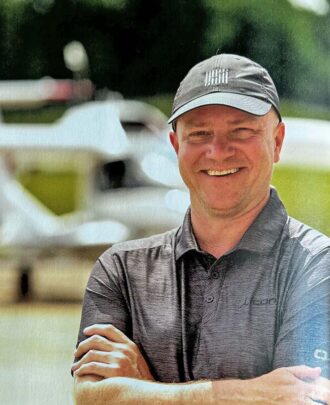 Firecrown boss Craig Fuller acquired ByDanJohnson.com (and my alternate domain name of AffordableAviation.com) because he recognized the content's value. This was reinforced because he owns and flies two LSA (an Icon A5 and a Tecnam Astore). He knows and likes the same kind of aircraft that you do.
Can you imagine a better group to help your entry into aviation writing?
Firecrown boss Craig Fuller acquired ByDanJohnson.com (and my alternate domain name of AffordableAviation.com) because he recognized the content's value. This was reinforced because he owns and flies two LSA (an Icon A5 and a Tecnam Astore). He knows and likes the same kind of aircraft that you do.
Can you imagine a better group to help your entry into aviation writing?

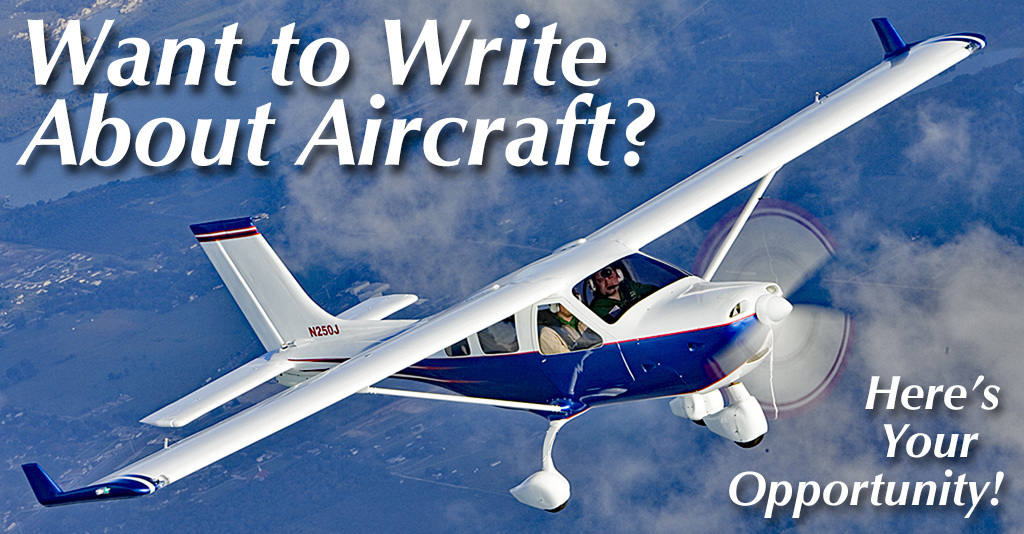
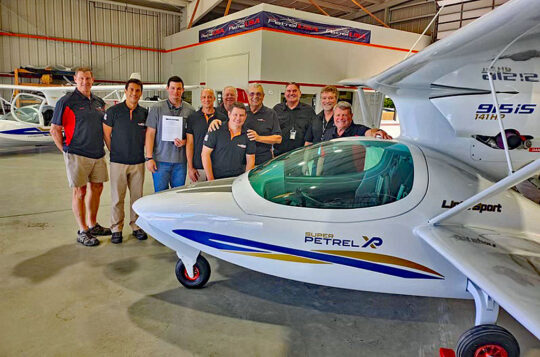
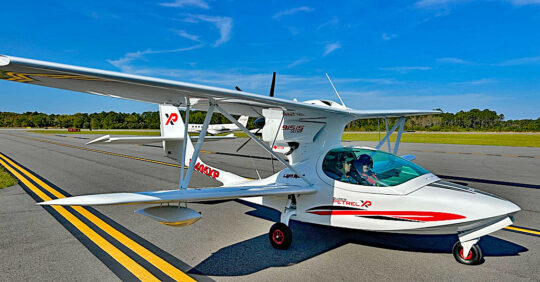 This distinctive seaplane in biplane configuration earlier announced their
This distinctive seaplane in biplane configuration earlier announced their 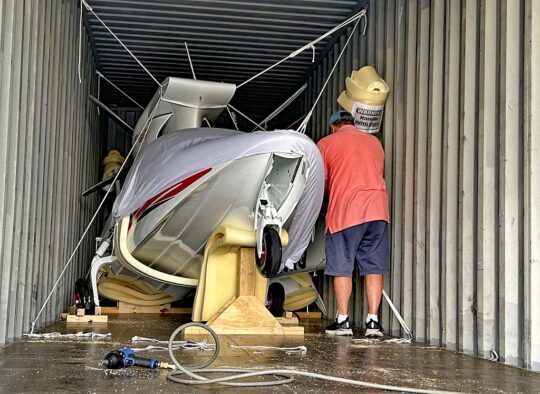 With great efficiency, the two aircraft were unpacked from container (nearby images), assembled, and had their approval inspection done. This happened in days, thanks to advanced planning and full preparation.
With great efficiency, the two aircraft were unpacked from container (nearby images), assembled, and had their approval inspection done. This happened in days, thanks to advanced planning and full preparation.
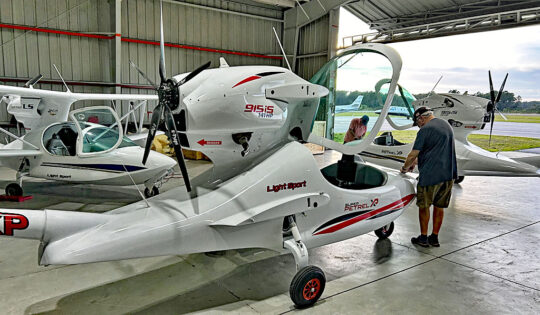 New Zealand's Wave has completed its air trials after a lengthy development period. Deliveries have yet to begin.
Meanwhile, longtime market leader — still with the largest fleet flying, more than 600 aircraft — Progressive Aerodyne's Searey appears to have gone dormant. Another popular choice is Seamax and it, too, has experienced difficulties. As in most small industries, the light airplane business can be a tough taskmaster.
Despite the prices of these LSA seaplanes, running past $400,000 in some cases, aircraft manufacturing is a low-volume business that demands high quality components and careful manufacturing plus having to meet a high standard for FAA approval. Getting all that right is quite challenging.
New Zealand's Wave has completed its air trials after a lengthy development period. Deliveries have yet to begin.
Meanwhile, longtime market leader — still with the largest fleet flying, more than 600 aircraft — Progressive Aerodyne's Searey appears to have gone dormant. Another popular choice is Seamax and it, too, has experienced difficulties. As in most small industries, the light airplane business can be a tough taskmaster.
Despite the prices of these LSA seaplanes, running past $400,000 in some cases, aircraft manufacturing is a low-volume business that demands high quality components and careful manufacturing plus having to meet a high standard for FAA approval. Getting all that right is quite challenging.
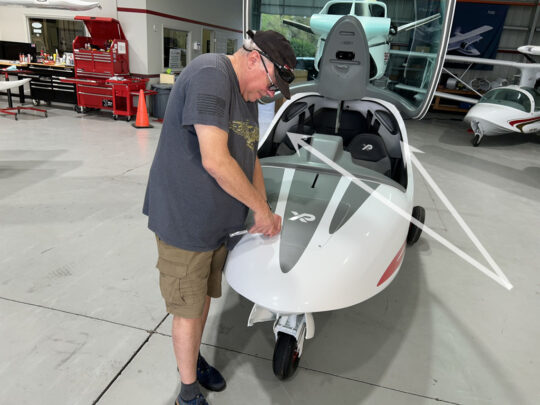
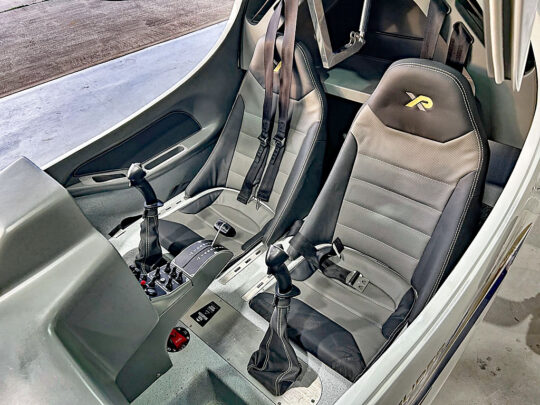 XP suggests more power and the Rotax 915iS does not disappoint. A boost from 100 to 141 horsepower spinning a 5-blade e-Prop propeller is certain to make Super Petrel XP a hot performer off water or land.
The cockpit has been modernized and optimized. I particularly like the centered main panel — with room for an iPad on the sides — and the extended throttle quadrant. The twin headset storage niches are a clever use of space (arrows).
A top attraction is the aft-hinged full canopy that replaces doors and a windscreen in older models (a nearby image shows both). Rodrigo Scoda is pleased with the wide-open visibility the new construction brought.
XP suggests more power and the Rotax 915iS does not disappoint. A boost from 100 to 141 horsepower spinning a 5-blade e-Prop propeller is certain to make Super Petrel XP a hot performer off water or land.
The cockpit has been modernized and optimized. I particularly like the centered main panel — with room for an iPad on the sides — and the extended throttle quadrant. The twin headset storage niches are a clever use of space (arrows).
A top attraction is the aft-hinged full canopy that replaces doors and a windscreen in older models (a nearby image shows both). Rodrigo Scoda is pleased with the wide-open visibility the new construction brought.
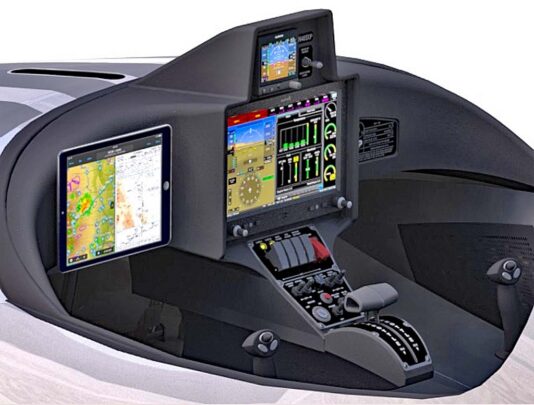 Since the U.S. team is ready and raring to go, you can make your way to
Since the U.S. team is ready and raring to go, you can make your way to 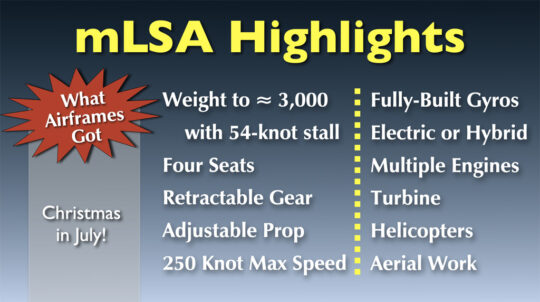
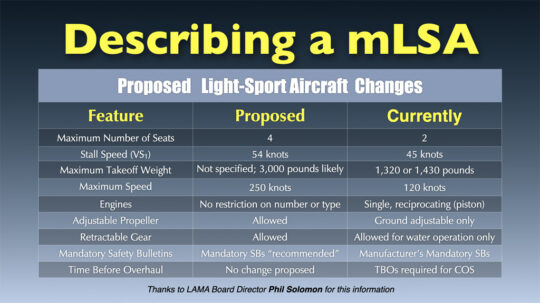
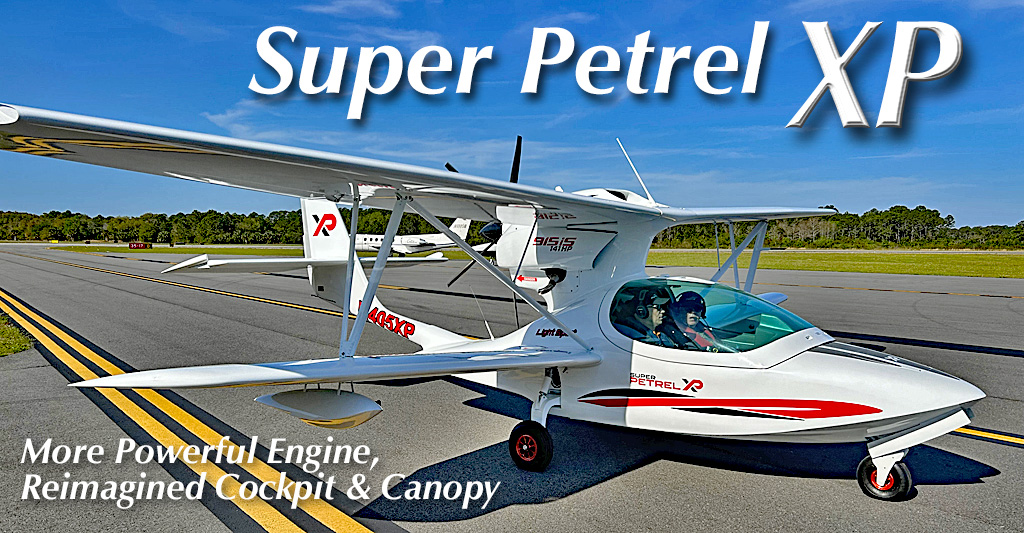
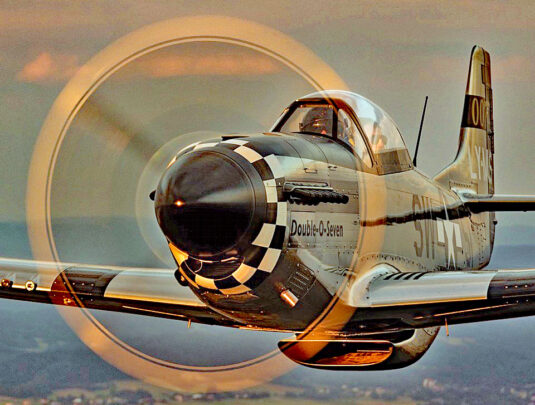 Don't even think about affording a real P-51 unless you win the lottery. Warbirds may be the biggest attraction at AirVenture Oshkosh year after year but only a few pilots have sufficiently deep pockets to own and fly one of these historic machines.
Don't even think about affording a real P-51 unless you win the lottery. Warbirds may be the biggest attraction at AirVenture Oshkosh year after year but only a few pilots have sufficiently deep pockets to own and fly one of these historic machines.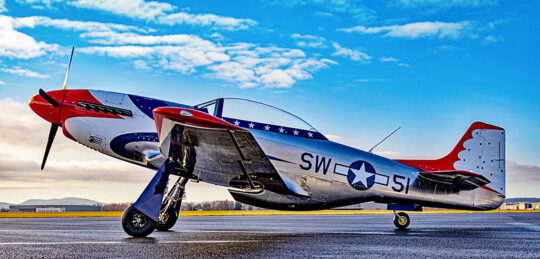 SW-51 is breathtakingly priced as well, many readers may think. Nonetheless, SW-51 is an awesome-looking flying machine that some will figure out how to afford.
Even more rare than a Ferrari, SW-51 is a very-limited-production design. The company forecasts a dozen aircraft per year. At that rate and given SW-51's exquisite detail, I'll bet they can sell out year after year.
SW-51 is breathtakingly priced as well, many readers may think. Nonetheless, SW-51 is an awesome-looking flying machine that some will figure out how to afford.
Even more rare than a Ferrari, SW-51 is a very-limited-production design. The company forecasts a dozen aircraft per year. At that rate and given SW-51's exquisite detail, I'll bet they can sell out year after year.
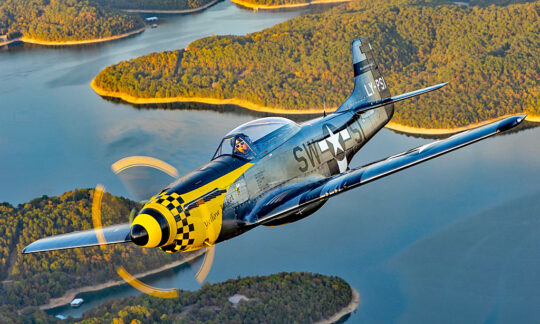 Nearby images supplied by CEO Christian von Kessel of Scalewings Aircraft reflect the first deliveries of this oh-so handsome '51 replica. He reported…
"As of today, we have completed up to serial number 15, of which 5 are in flying condition. Some are kits in progress. At this time, owners can travel to ScaleWings' factory in the Aviation Valley of Poland to participate in our Build Your Legend builder-assist program," encouraged Christian.
Nearby images supplied by CEO Christian von Kessel of Scalewings Aircraft reflect the first deliveries of this oh-so handsome '51 replica. He reported…
"As of today, we have completed up to serial number 15, of which 5 are in flying condition. Some are kits in progress. At this time, owners can travel to ScaleWings' factory in the Aviation Valley of Poland to participate in our Build Your Legend builder-assist program," encouraged Christian.
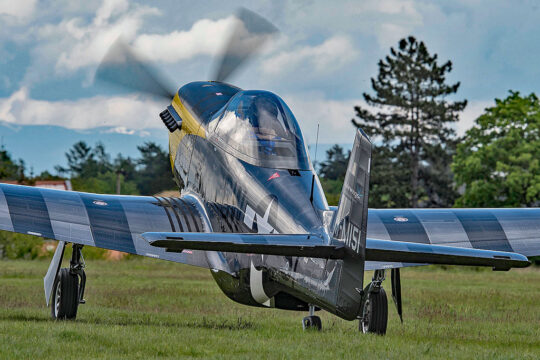 It appears that after signing the contract, new owners personalize or memorialize their SW-51. Distinctive paint jobs may explain their intent better than words. Enjoy these professionally-shot images.
Christian von Kessel, or CvK, has lead ScaleWings for several years and has poured himself into the project. It's taken years but he has persistently financed and built the company to create these amazing aircraft.
It appears that after signing the contract, new owners personalize or memorialize their SW-51. Distinctive paint jobs may explain their intent better than words. Enjoy these professionally-shot images.
Christian von Kessel, or CvK, has lead ScaleWings for several years and has poured himself into the project. It's taken years but he has persistently financed and built the company to create these amazing aircraft.
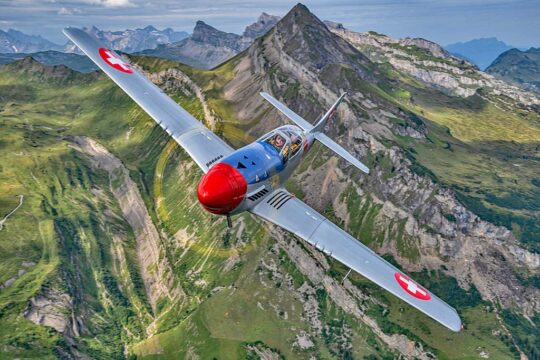 "Our team has grown from 25 people in early 2022 to 72 full-time employees today," Christian said. "As a consequence of the increased staff, production ramped up to one ready-to-fly SW-51 every four to six weeks."
"Our fleet, including prototypes and customer aircraft, have experienced nearly 1,000 hours with zero problems, a testament to the integrity of design and systems," Christian noted. "We only had to perform routine maintenance at official Rotax intervals." He explained that even while aircraft were tested in both cold plus humid, hot, and high conditions, "cooling and engine parameters ran smoothly."
"Our team has grown from 25 people in early 2022 to 72 full-time employees today," Christian said. "As a consequence of the increased staff, production ramped up to one ready-to-fly SW-51 every four to six weeks."
"Our fleet, including prototypes and customer aircraft, have experienced nearly 1,000 hours with zero problems, a testament to the integrity of design and systems," Christian noted. "We only had to perform routine maintenance at official Rotax intervals." He explained that even while aircraft were tested in both cold plus humid, hot, and high conditions, "cooling and engine parameters ran smoothly."
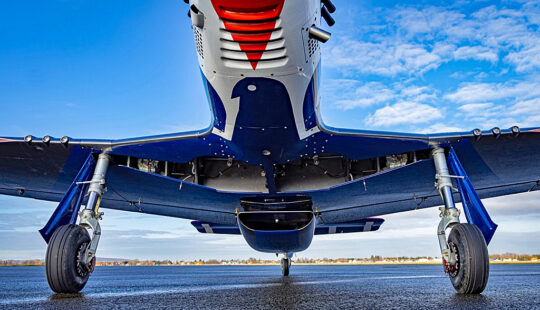 "While SW-51 is extremely true to the original look, ScaleWings' trailing edge is modified from the Original P-51 shape to allow for safe stall behavior, even in accelerated stalls," Christian stated. A special "polished aluminum“ paint finish has been developed for an even more realistic original look.
Heavy duty landing gear with generous suspension absorbs hard landings, said ScaleWings. "It helps makes the pilot look like a pro," smiled Christian.
Dual controls are offered in both front and rear to include power quadrant and prop setting. The SW-51 canopy allows an aft slide of 5-10 inches for ventilation; it then hinges to provide easier entry for the rear pilot or passenger.
"While SW-51 is extremely true to the original look, ScaleWings' trailing edge is modified from the Original P-51 shape to allow for safe stall behavior, even in accelerated stalls," Christian stated. A special "polished aluminum“ paint finish has been developed for an even more realistic original look.
Heavy duty landing gear with generous suspension absorbs hard landings, said ScaleWings. "It helps makes the pilot look like a pro," smiled Christian.
Dual controls are offered in both front and rear to include power quadrant and prop setting. The SW-51 canopy allows an aft slide of 5-10 inches for ventilation; it then hinges to provide easier entry for the rear pilot or passenger.
 A Garmin avionics suite features the big 10-inch G3X Touch EFIS with G5 in the front panel. The aft panel has a 7-inch G3X Touch.
Being a taildragger, ScaleWings incorporated a underside-mounted, forward-viewing taxi camera for a live view of gear extension or retraction plus more comfortable and safe taildragger taxiing.
Deluxe Beringer-brand brakes and wheels are fitted with Michelin aviation tires.
A Garmin avionics suite features the big 10-inch G3X Touch EFIS with G5 in the front panel. The aft panel has a 7-inch G3X Touch.
Being a taildragger, ScaleWings incorporated a underside-mounted, forward-viewing taxi camera for a live view of gear extension or retraction plus more comfortable and safe taildragger taxiing.
Deluxe Beringer-brand brakes and wheels are fitted with Michelin aviation tires.

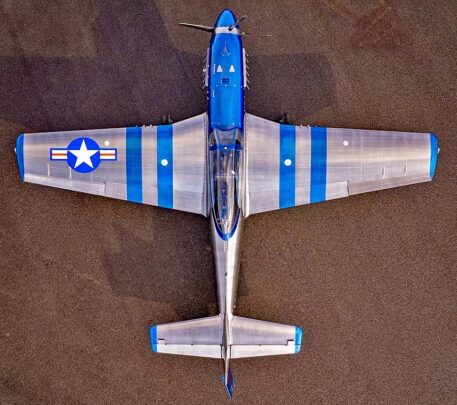 A bigger 4-blade prop in the works via a collaboration with MT-Propeller. Planned for the 916iS, it can use a larger diameter that will more closely resemble the large prop on a North American Mustang.
Christian finished with this thought: "Pilots who flew both types (P-51 and SW-51) told us the SW-51 in many ways is more fun to fly due to its intuitive controls, comfortable stick forces, ease of operation and forgiving speeds. The only thing missing is the sound and power of a mighty Merlin engine."
A bigger 4-blade prop in the works via a collaboration with MT-Propeller. Planned for the 916iS, it can use a larger diameter that will more closely resemble the large prop on a North American Mustang.
Christian finished with this thought: "Pilots who flew both types (P-51 and SW-51) told us the SW-51 in many ways is more fun to fly due to its intuitive controls, comfortable stick forces, ease of operation and forgiving speeds. The only thing missing is the sound and power of a mighty Merlin engine."
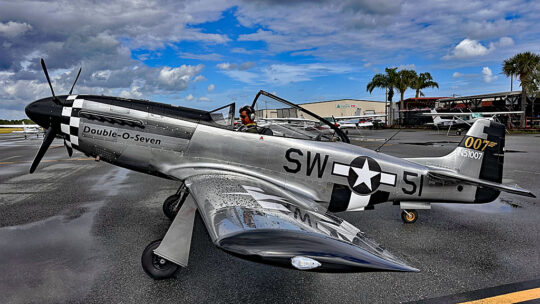
 Okay, let's grapple with the cost of a SW-51. At better than $400,000, it's expensive, yes. Look very closely at this aircraft and you might appreciate why it requires such a price. "A ready-to-fly version of our SW-51 is available at about 10% of the acquisition cost and only 2% of the operational cost of an Original P-51," said Christian.
If $400 grand is outside your budget, one alternative exists: a kit version (see nearby image).
If you have skills and time, you could buy a SW-51 piece-by-piece. This
Okay, let's grapple with the cost of a SW-51. At better than $400,000, it's expensive, yes. Look very closely at this aircraft and you might appreciate why it requires such a price. "A ready-to-fly version of our SW-51 is available at about 10% of the acquisition cost and only 2% of the operational cost of an Original P-51," said Christian.
If $400 grand is outside your budget, one alternative exists: a kit version (see nearby image).
If you have skills and time, you could buy a SW-51 piece-by-piece. This 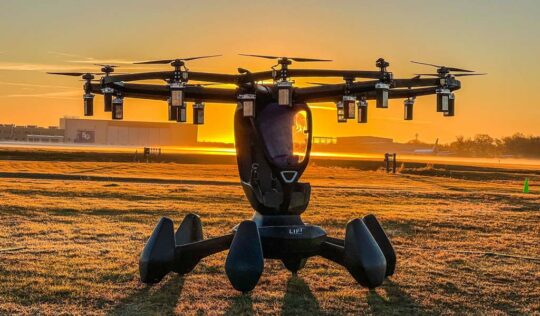
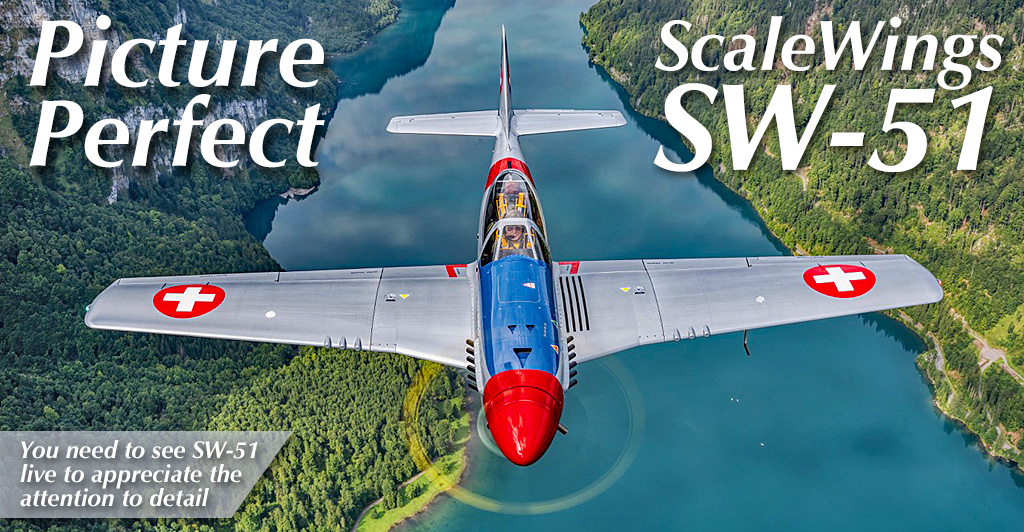
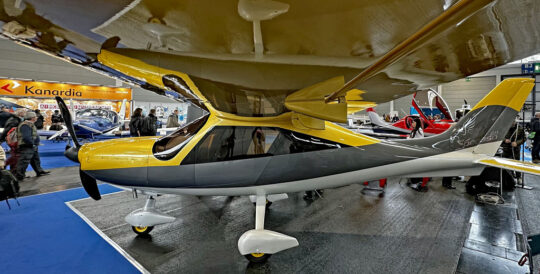
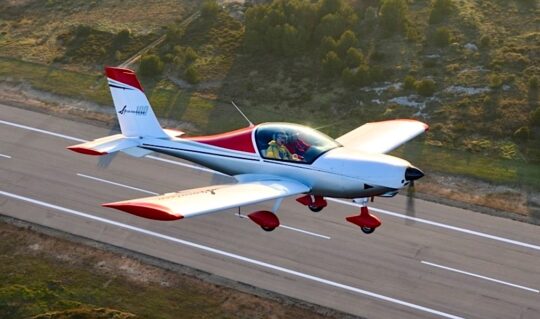
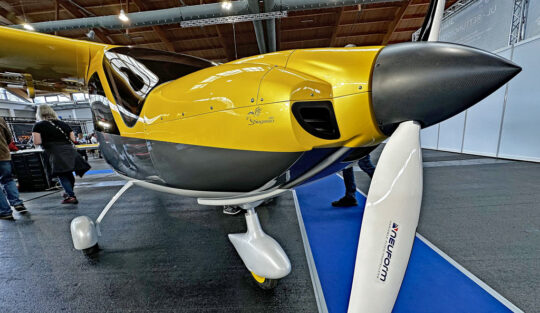 European aviation journalist Marino Boric writing for this website stated, "Italian ultralight manufacturer Promecc, with deep roots in manufacturing of commercial aviation subassemblies, brought to Aero Friedrichshafen their Pegaso all-composite, sleek, high-wing aircraft, which derives from the low-wing Freccia.
Pegaso offers now a new, more ergonomic interior and Marino reported it was "ready for series production." Its access doors are now front-hinged, "making cabin entry much easier," he added.
European aviation journalist Marino Boric writing for this website stated, "Italian ultralight manufacturer Promecc, with deep roots in manufacturing of commercial aviation subassemblies, brought to Aero Friedrichshafen their Pegaso all-composite, sleek, high-wing aircraft, which derives from the low-wing Freccia.
Pegaso offers now a new, more ergonomic interior and Marino reported it was "ready for series production." Its access doors are now front-hinged, "making cabin entry much easier," he added.
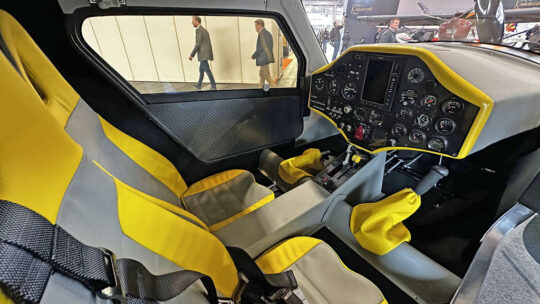 The well-established, fast, retractable-gear, low-wing aircraft Freccia, which successfully passed the static load tests for the 600-kilogram (1,320 pound) certification in Germany, was also showcased together with Promecc's best-priced fixed-gear low-wing (nearby image).
In addition to the Rotax 912 and Rotax 914 turbo, the newer Freccia RG has under the cowling the more powerful Rotax 915iS. As Marino heard from company owner Mauro Dono at Aero 2022, the event was “terrific good” with several sold aircraft. It was not reported if Promecc plans to add the 915iS or (more increasingly, designers say) Rotax's newest 160 horsepower 916iS. To my eyes, the Pegaso could easily accommodate the larger engine in its long, spacious nose cowling (nearby image).
The well-established, fast, retractable-gear, low-wing aircraft Freccia, which successfully passed the static load tests for the 600-kilogram (1,320 pound) certification in Germany, was also showcased together with Promecc's best-priced fixed-gear low-wing (nearby image).
In addition to the Rotax 912 and Rotax 914 turbo, the newer Freccia RG has under the cowling the more powerful Rotax 915iS. As Marino heard from company owner Mauro Dono at Aero 2022, the event was “terrific good” with several sold aircraft. It was not reported if Promecc plans to add the 915iS or (more increasingly, designers say) Rotax's newest 160 horsepower 916iS. To my eyes, the Pegaso could easily accommodate the larger engine in its long, spacious nose cowling (nearby image).
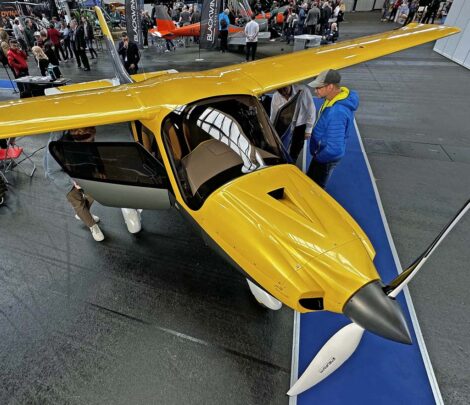 Promecc informed Marino that they contemplated bringing their aircraft to EAA AirVenture Oshkosh. If they do, I can imagine a warm response to this handsome airplane. Of course, pilots always want to know the price and Marino believed Promecc's were enticing.
Marino reported that they intend to offer to the U.S. public the full range of aircraft as factory built but also as "price-competitive" kits.
Promecc informed Marino that they contemplated bringing their aircraft to EAA AirVenture Oshkosh. If they do, I can imagine a warm response to this handsome airplane. Of course, pilots always want to know the price and Marino believed Promecc's were enticing.
Marino reported that they intend to offer to the U.S. public the full range of aircraft as factory built but also as "price-competitive" kits.
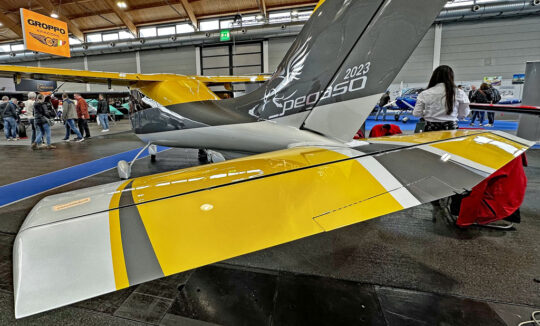 Kit prices in Europe: Sparviero €40.000 ($43,500 at posting), Pegaso €65.000 ($70,800) and Freccia €69.000 ($75,000). The full configuration of these kits was not known as this article went online. However, that much detail is moot until someone offers to represent the aircraft here because builder support from Italy would be challenging.
What may be most interesting is the potential for those relatively modest kit prices to translate into more affordable factory built prices once American representation is secured.
Here's how Promecc describes the technical qualities of Pegaso:
Kit prices in Europe: Sparviero €40.000 ($43,500 at posting), Pegaso €65.000 ($70,800) and Freccia €69.000 ($75,000). The full configuration of these kits was not known as this article went online. However, that much detail is moot until someone offers to represent the aircraft here because builder support from Italy would be challenging.
What may be most interesting is the potential for those relatively modest kit prices to translate into more affordable factory built prices once American representation is secured.
Here's how Promecc describes the technical qualities of Pegaso:
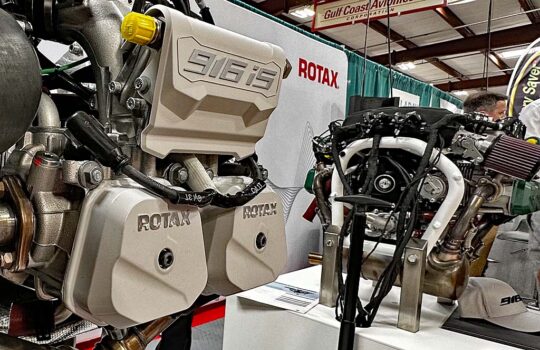
 As Promecc is a producer of professional aviation components, they may be able to manage efficient manufacturing processes and use their size for economies of scale in the purchase of raw materials. Their work with other large producers may give them connections to create American representation.
This combination of attributes could give the Italian company market entry into the world of Mosaic and what a beautiful shape they bring to the fleet.
As Promecc is a producer of professional aviation components, they may be able to manage efficient manufacturing processes and use their size for economies of scale in the purchase of raw materials. Their work with other large producers may give them connections to create American representation.
This combination of attributes could give the Italian company market entry into the world of Mosaic and what a beautiful shape they bring to the fleet.
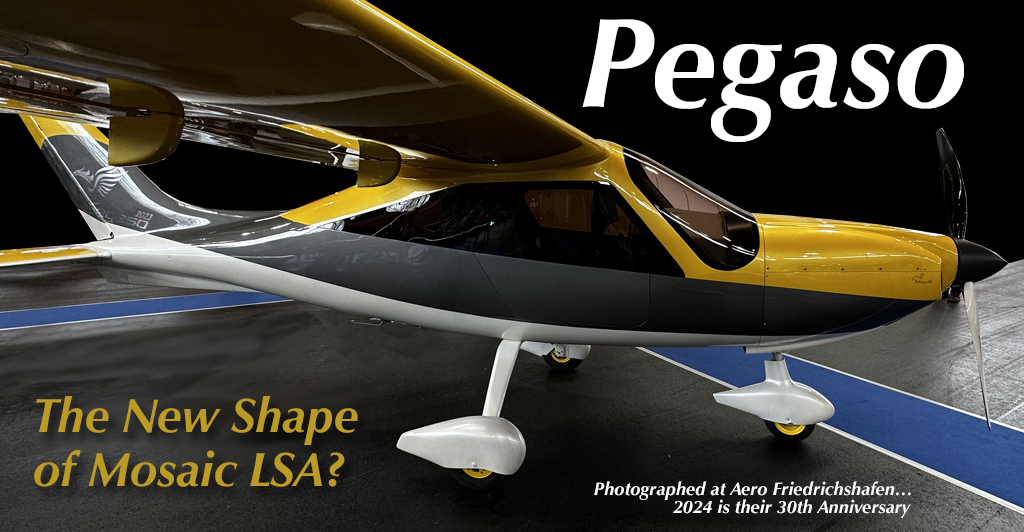
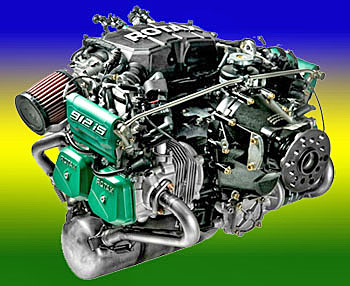 As A5's Rotax 912iS burns less than five gallons of fuel per hour, the company said, "This equates to an additional two hours of endurance or the ability to carry more baggage or heavier passengers."
As A5's Rotax 912iS burns less than five gallons of fuel per hour, the company said, "This equates to an additional two hours of endurance or the ability to carry more baggage or heavier passengers."
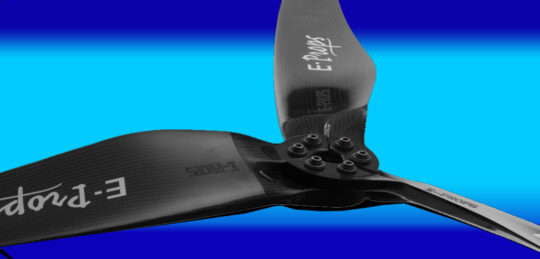 “The 4-blade propeller is a huge upgrade to my Icon A5,” said Santiago Masdeau, an A5 owner based in South Florida. “I’ve flown more than 100 hours with the original 3-blade and now I have around 20 hours on the new carbon fiber 4-blade. Immediately, I noticed less vibration and noise, better acceleration, and improved takeoff distances. I’ve also experienced an increase on my cruise speed at 5,000 rpm and lower fuel burn. The entire experience is better, and it looks amazing, too!”
A 2024 A5 Limited Edition starts at $409,000 with the
“The 4-blade propeller is a huge upgrade to my Icon A5,” said Santiago Masdeau, an A5 owner based in South Florida. “I’ve flown more than 100 hours with the original 3-blade and now I have around 20 hours on the new carbon fiber 4-blade. Immediately, I noticed less vibration and noise, better acceleration, and improved takeoff distances. I’ve also experienced an increase on my cruise speed at 5,000 rpm and lower fuel burn. The entire experience is better, and it looks amazing, too!”
A 2024 A5 Limited Edition starts at $409,000 with the 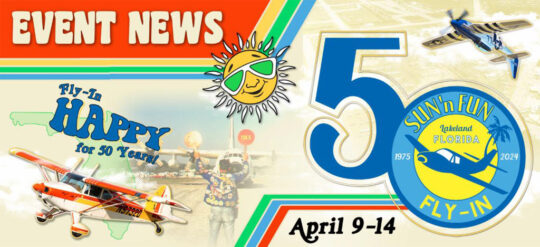 Sun 'n Fun e-blasted, "6 Things To Do When You Land at Sun 'n Fun 2024!" The half-century-old event runs April 9 to 14, 2024 in Lakeland, Florida.
Sun 'n Fun e-blasted, "6 Things To Do When You Land at Sun 'n Fun 2024!" The half-century-old event runs April 9 to 14, 2024 in Lakeland, Florida.
 Fly ‘n Early Aircraft Camping packages allow you to fly in as early as Saturday 4/6/2024 and stay through Thursday 4/11/2024. Includes camping and admissions for one or two persons. Great for those who fly-in early and depart on Thursday!
Fly ‘n Early Aircraft Camping packages allow you to fly in as early as Saturday 4/6/2024 and stay through Thursday 4/11/2024. Includes camping and admissions for one or two persons. Great for those who fly-in early and depart on Thursday!

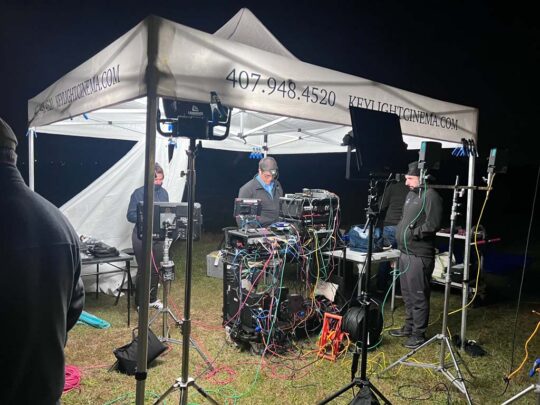
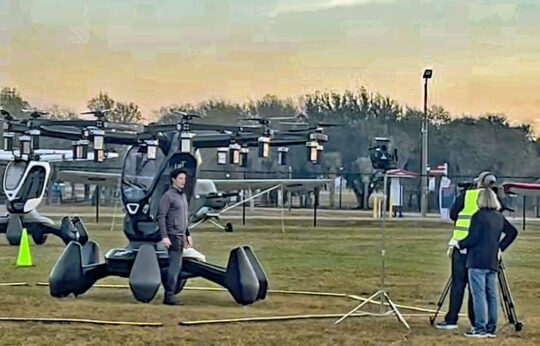
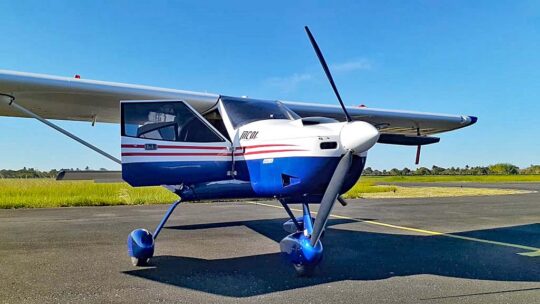 Ready for some aviation alphabet soup? LSA and VREF get together. The first abbreviation you know well. The latter may look familiar but the appraisal service appears concentrated on higher-end aircraft, which makes sense as those aircraft comprise the bulk of the U.S. aircraft fleet.
Ready for some aviation alphabet soup? LSA and VREF get together. The first abbreviation you know well. The latter may look familiar but the appraisal service appears concentrated on higher-end aircraft, which makes sense as those aircraft comprise the bulk of the U.S. aircraft fleet.
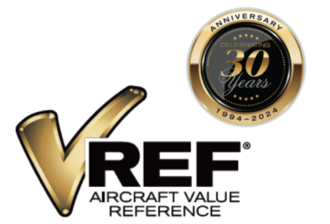 "VREF listing ensures accurate market valuation of the MC-01, facilitating smoother financing and insurance processes for buyers," Shalom continued. "In addition, such recognized listings allow value to be accurately forecasted, providing a reliable benchmark for resale value."
"VREF listing ensures accurate market valuation of the MC-01, facilitating smoother financing and insurance processes for buyers," Shalom continued. "In addition, such recognized listings allow value to be accurately forecasted, providing a reliable benchmark for resale value."


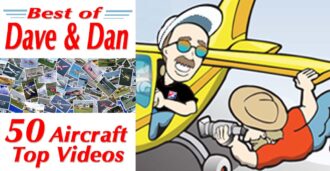
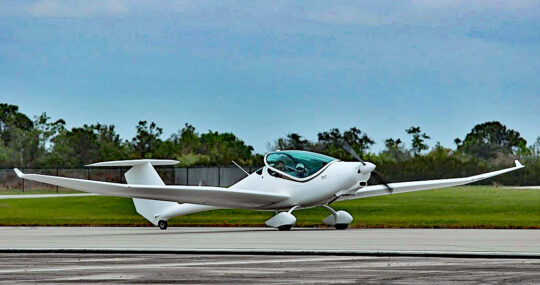
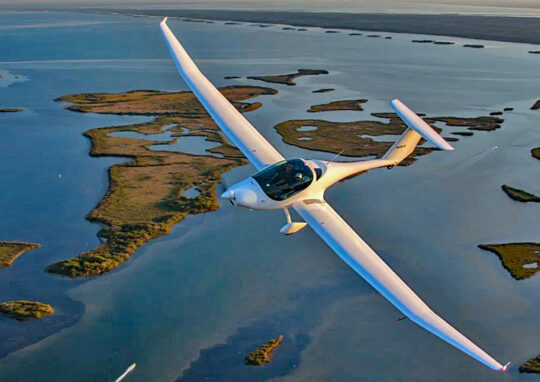 Despite a highly workable gasoline engine that many will prefer, the temptation of electric is especially strong with Phoenix.
Think about optimal benefits of electric propulsion.
I have long stated that Part 103 ultralights are already the first to be highly functional with electric propulsion, precisely because they are so light and their mission so modest. It's a simple formula: lighter weight = less batteries = less expense = a workable aircraft in 2024. That Part 103 ultralights aren't trying to travel long distances makes electric even more viable.
Despite a highly workable gasoline engine that many will prefer, the temptation of electric is especially strong with Phoenix.
Think about optimal benefits of electric propulsion.
I have long stated that Part 103 ultralights are already the first to be highly functional with electric propulsion, precisely because they are so light and their mission so modest. It's a simple formula: lighter weight = less batteries = less expense = a workable aircraft in 2024. That Part 103 ultralights aren't trying to travel long distances makes electric even more viable.

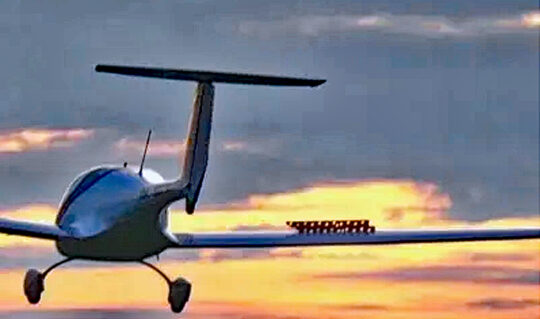
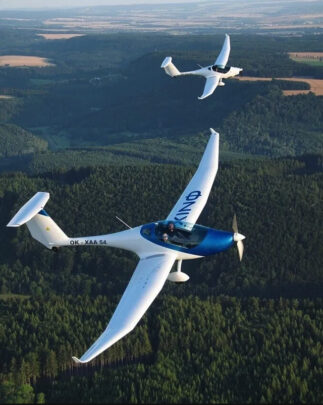 "The Phoenix motorglider is a taildragger with a twist. The tailwheel is controlled by the rudder pedals via cables to the rudder and steel rods connecting the rudder to the wheel. The tailwheel never “breaks free” or castors. Also, the main wheel disc brakes are controlled by a lever on the left control stick, which operates both main wheel brakes equally when used; no differential braking.
"Phoenix can be landed using the three-point or wheel landing. Wheel landings (landing on the mains and then holding the tailwheel off until speed is reduced) are easier and can be made with more precision than three-point landings but the three-point landing is critical when there is a crosswind blowing (because the tailwheel is on the ground and tracking can be controlled with the rudder pedals).
"The Phoenix motorglider is a taildragger with a twist. The tailwheel is controlled by the rudder pedals via cables to the rudder and steel rods connecting the rudder to the wheel. The tailwheel never “breaks free” or castors. Also, the main wheel disc brakes are controlled by a lever on the left control stick, which operates both main wheel brakes equally when used; no differential braking.
"Phoenix can be landed using the three-point or wheel landing. Wheel landings (landing on the mains and then holding the tailwheel off until speed is reduced) are easier and can be made with more precision than three-point landings but the three-point landing is critical when there is a crosswind blowing (because the tailwheel is on the ground and tracking can be controlled with the rudder pedals).
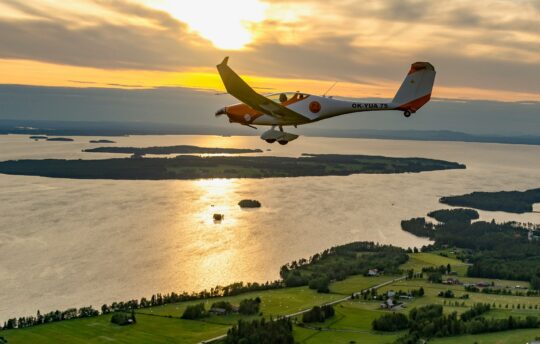 "The 15 meter (49 foot) wingtips give the Phoenix a 32:1 glide ratio, which means a lot of float or ground effect. Begin with the 11 meter (36 foot) wingtips that produce a 20:1 glide, which reduces ground effect and the amount of patience required by a learning pilot.
"When the spoilers are fully deployed after touchdown with the short tips, the plane remains planted on the ground with less chance of a bounce even if the plane touches down with extra energy.
"The 15 meter (49 foot) wingtips give the Phoenix a 32:1 glide ratio, which means a lot of float or ground effect. Begin with the 11 meter (36 foot) wingtips that produce a 20:1 glide, which reduces ground effect and the amount of patience required by a learning pilot.
"When the spoilers are fully deployed after touchdown with the short tips, the plane remains planted on the ground with less chance of a bounce even if the plane touches down with extra energy.
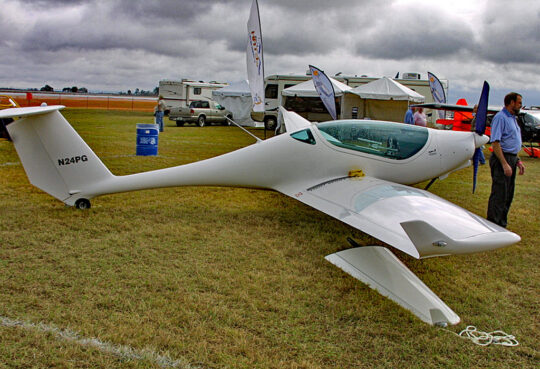
 Once on the ground, they say to "keep about one pound of force on each rudder pedal to keep them aligned in the neutral position. Apply very light pressure to one side or the other for directional control. It only takes very small adjustments on the rudder pedals when the plane is rolling at 40 knots. Keep the spoilers full open until clear of the runway. When doing touch and goes, don’t be too quick to close the spoilers on the go or you may get airborne unexpectedly or lose control directionally as the tailwheel comes back off the ground. Slow way down to 20 knots or so before closing the spoilers and adding power for another take-off," finished the experts.
Once you feel entirely comfortable with landing one of these flat-gliding aircraft, you're ready to go up aloft and use that magic to your benefit. Think of it this way: A 15 meter (49 foot) wingspan Phoenix generates a 32-to-1 glide. That means if you are up only 2,000 feet above the surface, you can still glide more than 10 miles before you're on the ground.
Once on the ground, they say to "keep about one pound of force on each rudder pedal to keep them aligned in the neutral position. Apply very light pressure to one side or the other for directional control. It only takes very small adjustments on the rudder pedals when the plane is rolling at 40 knots. Keep the spoilers full open until clear of the runway. When doing touch and goes, don’t be too quick to close the spoilers on the go or you may get airborne unexpectedly or lose control directionally as the tailwheel comes back off the ground. Slow way down to 20 knots or so before closing the spoilers and adding power for another take-off," finished the experts.
Once you feel entirely comfortable with landing one of these flat-gliding aircraft, you're ready to go up aloft and use that magic to your benefit. Think of it this way: A 15 meter (49 foot) wingspan Phoenix generates a 32-to-1 glide. That means if you are up only 2,000 feet above the surface, you can still glide more than 10 miles before you're on the ground.
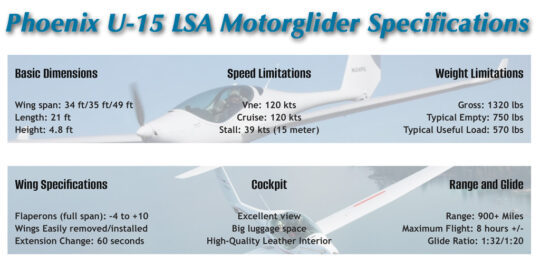 That's a safety margin every pilot can appreciate, even if you have to train a little bit to use it effectively.
That's a safety margin every pilot can appreciate, even if you have to train a little bit to use it effectively.
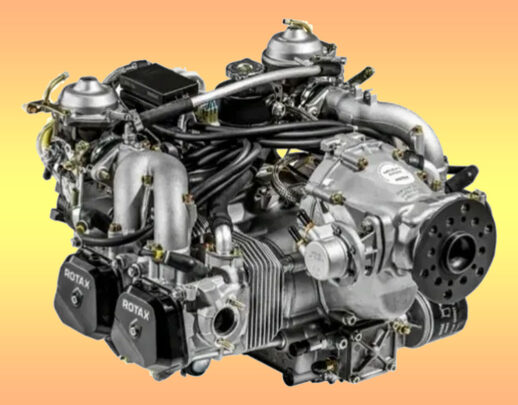
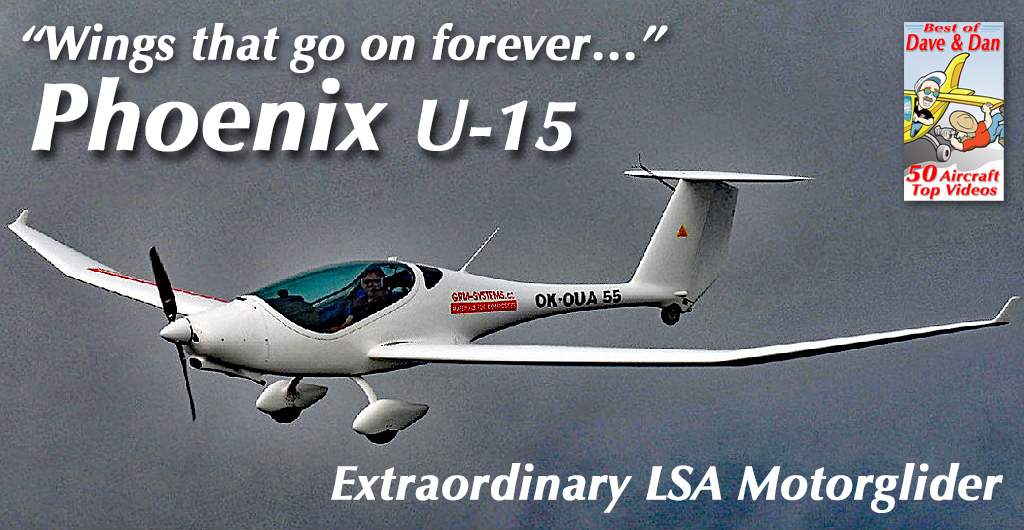
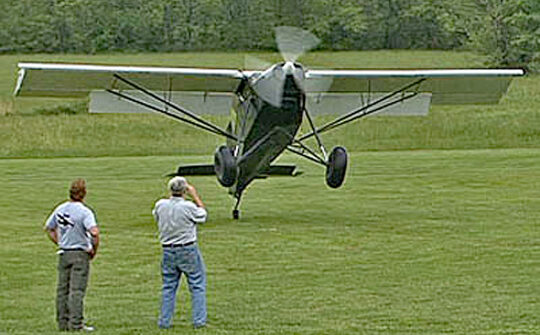
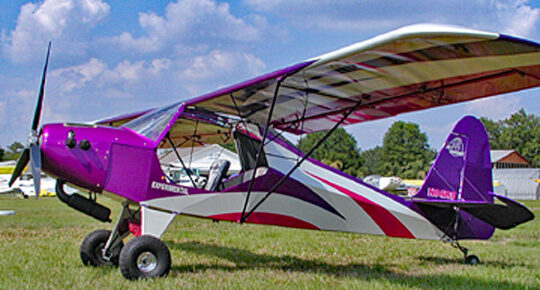
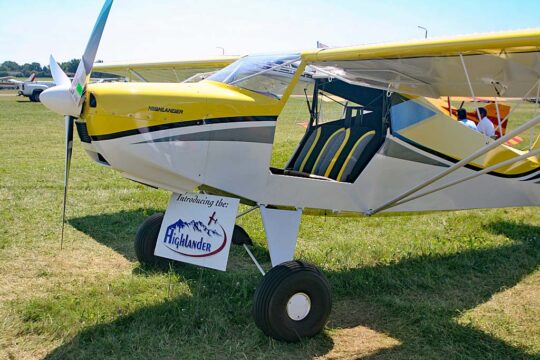
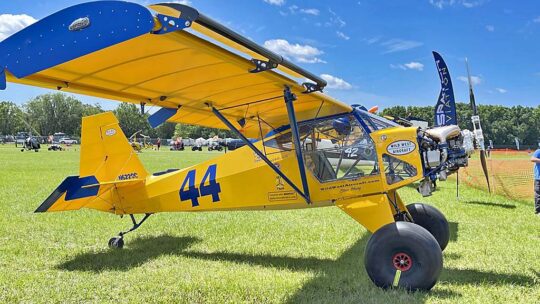
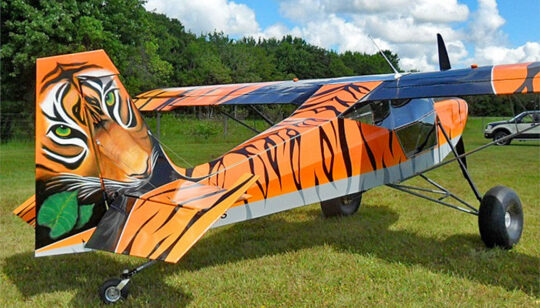
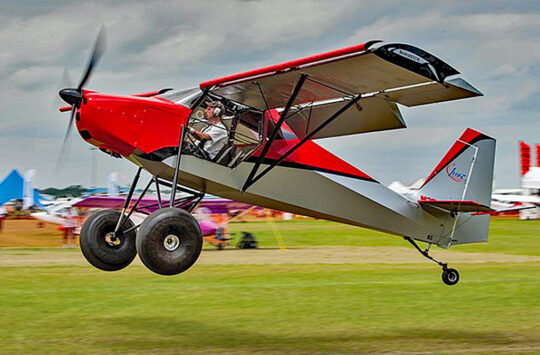 Following the success of Highlander, "Troy went back to the drawing board," Just said, "and in 2013, SuperSTOL was released." The significantly changed model featured a completely new wing with automatic leading edge slats that deploy at the right speed without pilot input.
Wing spoilers were integrated with ailerons and long extending flaps to counteract adverse yaw and help the wing work exceptionally hard, resulting in a stall speed of only 28 knots. Troy's redesigned airfoil went all-aluminum for the first time. Escapade and Highlander models use wood ribs following the tradition of other light aircraft of that time, notably Kitfox.
Following the success of Highlander, "Troy went back to the drawing board," Just said, "and in 2013, SuperSTOL was released." The significantly changed model featured a completely new wing with automatic leading edge slats that deploy at the right speed without pilot input.
Wing spoilers were integrated with ailerons and long extending flaps to counteract adverse yaw and help the wing work exceptionally hard, resulting in a stall speed of only 28 knots. Troy's redesigned airfoil went all-aluminum for the first time. Escapade and Highlander models use wood ribs following the tradition of other light aircraft of that time, notably Kitfox.
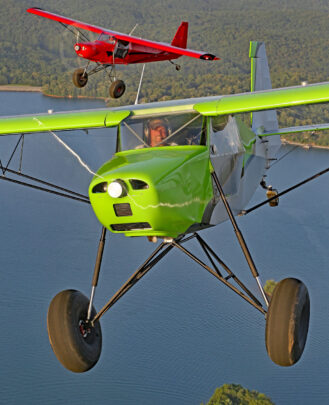

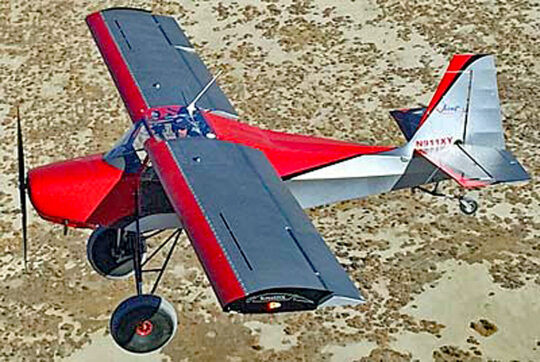 "Such freedom opens up endless possibilities for adventure and off-airport fun, or even your own backyard," said Just Aircraft. That pretty much defines SuperSTOL.
"Such freedom opens up endless possibilities for adventure and off-airport fun, or even your own backyard," said Just Aircraft. That pretty much defines SuperSTOL.
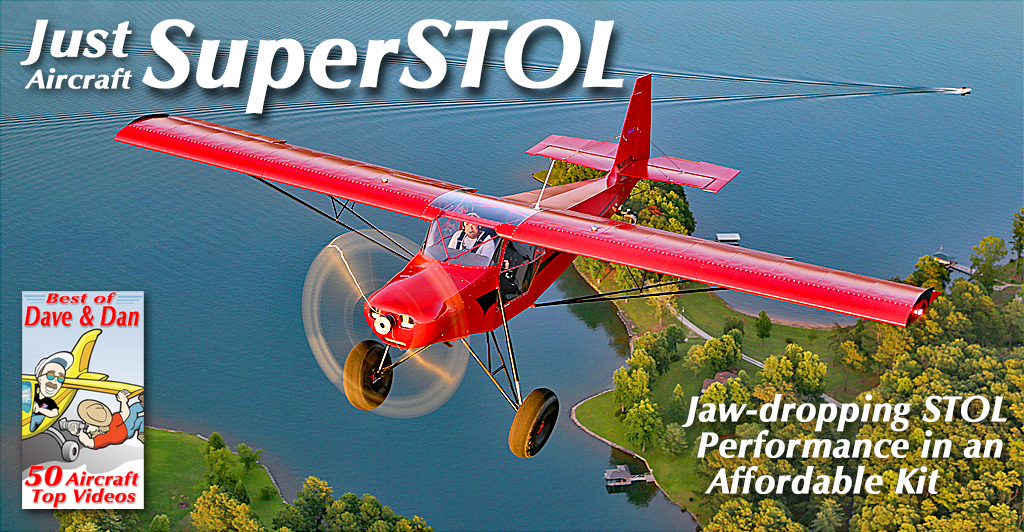
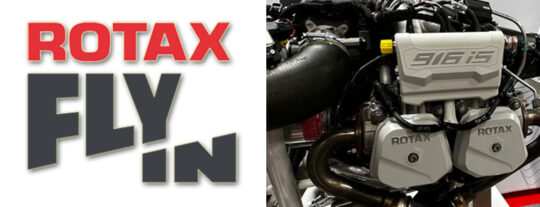 On three separate visits to Rotax I was able to attend one of their Fly-in events plus a special visit just for aviation journalists.
Beautiful and inviting as Wels is, this is not an easy visit for folks from the company's far-flung customer base in nearly every country on Earth. So, in addition to inviting the world to their headquarters event, Rotax is going abroad.
Get ready for Rotax's World Tour 2024!
On three separate visits to Rotax I was able to attend one of their Fly-in events plus a special visit just for aviation journalists.
Beautiful and inviting as Wels is, this is not an easy visit for folks from the company's far-flung customer base in nearly every country on Earth. So, in addition to inviting the world to their headquarters event, Rotax is going abroad.
Get ready for Rotax's World Tour 2024!
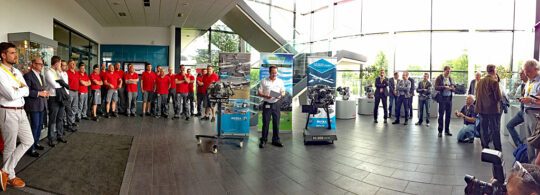
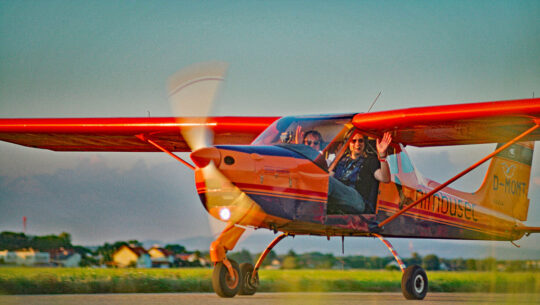 Given its globe-spanning reach, the company's World Tour 2024 will bring the company directly to customers and businessmen alike. Read below what each of the locations has to offer.
Rotax announced from Gunskirchen, Austria on February 6th, 2024, "The
Given its globe-spanning reach, the company's World Tour 2024 will bring the company directly to customers and businessmen alike. Read below what each of the locations has to offer.
Rotax announced from Gunskirchen, Austria on February 6th, 2024, "The 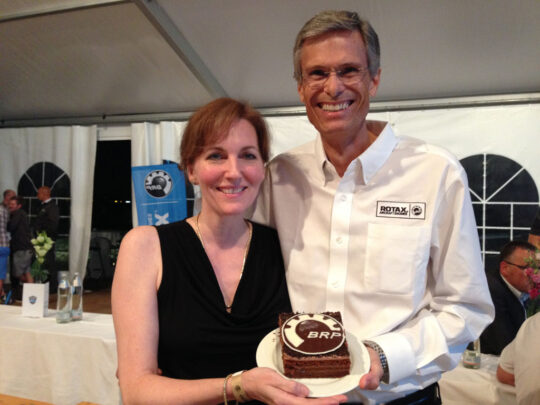
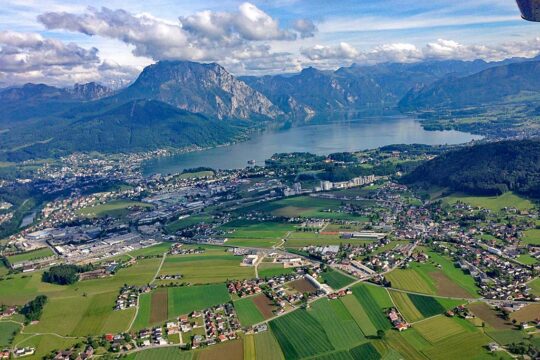

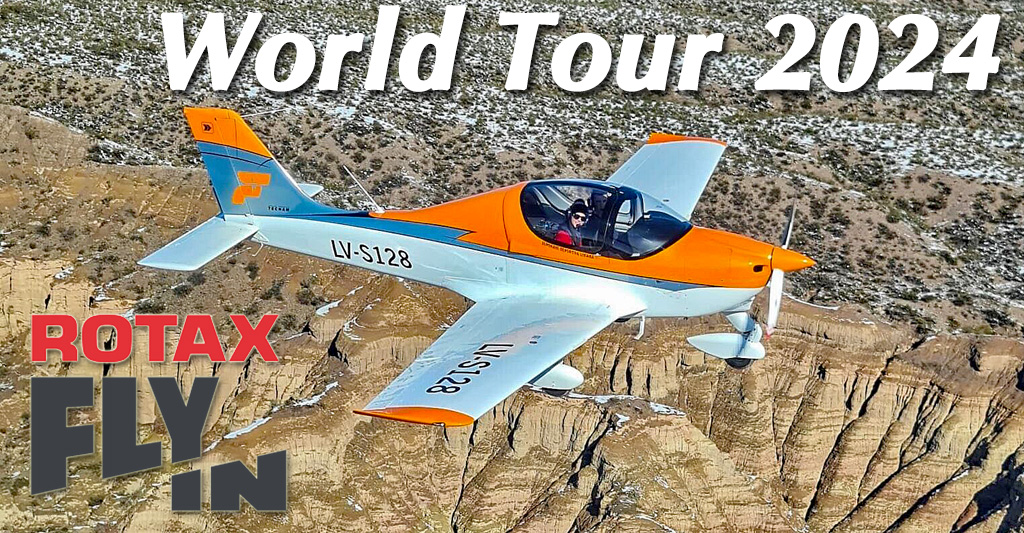
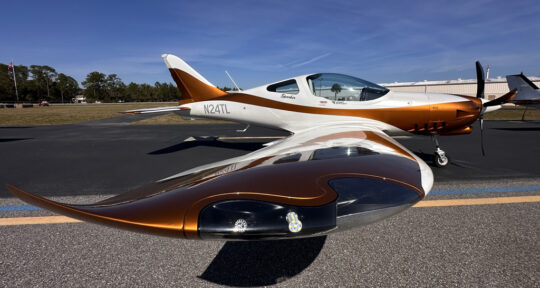 Then we have what I'll call the Mosaic LSA crowd. These are pilots with larger budgets — perhaps they sold a Cirrus or Bonanza and have equity to put toward a new aircraft. These experienced pilots are accustomed to well-equipped aircraft with generous cruise speeds.
Sparker directly addresses the last group. I got to experience this first-in-the-USA airplane when
Then we have what I'll call the Mosaic LSA crowd. These are pilots with larger budgets — perhaps they sold a Cirrus or Bonanza and have equity to put toward a new aircraft. These experienced pilots are accustomed to well-equipped aircraft with generous cruise speeds.
Sparker directly addresses the last group. I got to experience this first-in-the-USA airplane when  Show up at Spruce Creek (7FL6) on a nice flying day with a sharp new airplane and you are almost certain to draw a crowd. Sparker did. We almost had to shoo people away so we could get on with our demo flight.
We enjoyed a lovely Florida day in early February as you can see in the images or in the fresh new video below.
Show up at Spruce Creek (7FL6) on a nice flying day with a sharp new airplane and you are almost certain to draw a crowd. Sparker did. We almost had to shoo people away so we could get on with our demo flight.
We enjoyed a lovely Florida day in early February as you can see in the images or in the fresh new video below.
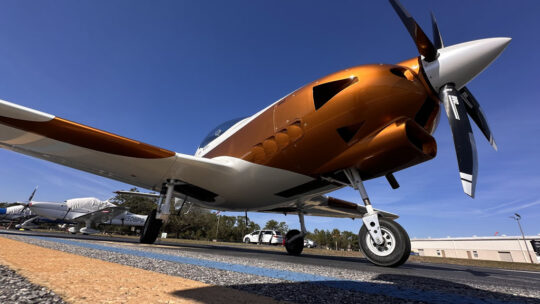 Our demo flight took us from Spruce Creek (7FL6) to DeLand (KDED) and back with maneuvering in between. We operated at altitudes of 1,200 to 4,500 feet on a mild day in the low 70s with modest humidity. My focus was on aircraft maneuvering and flight controls because the deluxe instrumentation is already familiar to pilots and because I would use Trey's experience at flying from South Carolina for cross country speeds and fuel burns; these provide real-world experience, not a test pilot's controlled findings.
Our demo flight took us from Spruce Creek (7FL6) to DeLand (KDED) and back with maneuvering in between. We operated at altitudes of 1,200 to 4,500 feet on a mild day in the low 70s with modest humidity. My focus was on aircraft maneuvering and flight controls because the deluxe instrumentation is already familiar to pilots and because I would use Trey's experience at flying from South Carolina for cross country speeds and fuel burns; these provide real-world experience, not a test pilot's controlled findings.
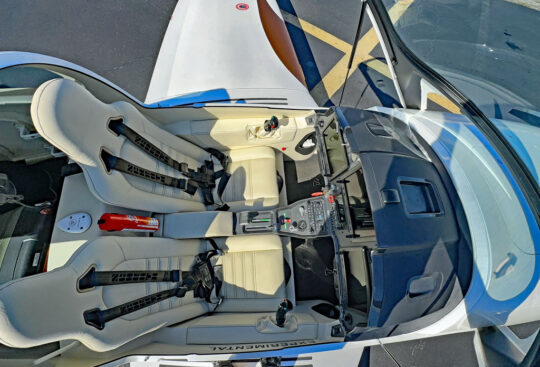 Any producer looking to sell an advanced aircraft such as Sparker better make it deluxe… and TL did. From its 50-inch-wide cockpit (a foot wider than a Cessna 172) to its Kevlar cockpit cage to its potent engine to its airframe parachute, Sparker lacks for little. Yet "little" isn't what TL designers sought.
Large comfortable seats are fixed in position but rudder pedals adjust, electrically. A button in front of each outside-mounted joystick smoothly moves pedals to meet your feet. The joysticks bristle with buttons for trim controls, PTT, autopilot off, or frequency toggle.
Any producer looking to sell an advanced aircraft such as Sparker better make it deluxe… and TL did. From its 50-inch-wide cockpit (a foot wider than a Cessna 172) to its Kevlar cockpit cage to its potent engine to its airframe parachute, Sparker lacks for little. Yet "little" isn't what TL designers sought.
Large comfortable seats are fixed in position but rudder pedals adjust, electrically. A button in front of each outside-mounted joystick smoothly moves pedals to meet your feet. The joysticks bristle with buttons for trim controls, PTT, autopilot off, or frequency toggle.
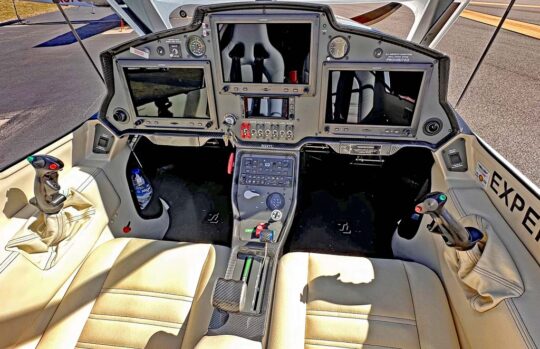 The seats themselves have tall back support and are electrically heated for colder climates or higher altitude operation. You can load up those seats with some larger pilots.
At its new gross weight ("1,652 pounds," said Trey), Sparker has a useful load that accommodates, get this!, two 230-pound occupants, plus 75 pounds of luggage, plus full fuel of 34.5 gallons. Numbers like that cover most requests I've heard. "You'd be hard-pressed to max-out Sparker's useful load," Trey concluded.
The seats themselves have tall back support and are electrically heated for colder climates or higher altitude operation. You can load up those seats with some larger pilots.
At its new gross weight ("1,652 pounds," said Trey), Sparker has a useful load that accommodates, get this!, two 230-pound occupants, plus 75 pounds of luggage, plus full fuel of 34.5 gallons. Numbers like that cover most requests I've heard. "You'd be hard-pressed to max-out Sparker's useful load," Trey concluded.
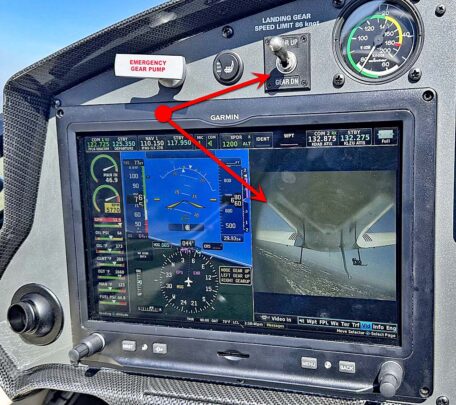 All instruments are within a comfortable reach and TL installed more screens than other LSA, a total of three 10-inch
All instruments are within a comfortable reach and TL installed more screens than other LSA, a total of three 10-inch 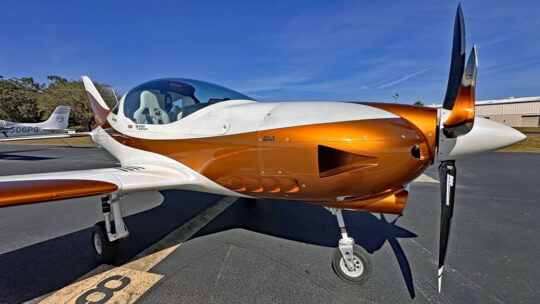 It's built mostly of carbon fiber with Kevlar reinforcements around the occupants. The main spar is also carbon fiber. Capable of an 11 G ultimate load, Sparker felt absolutely solid and rigid in the air, even when banked aggressively back and forth (see video).
Essentially a side-by-side version of TL's tandem Stream (
It's built mostly of carbon fiber with Kevlar reinforcements around the occupants. The main spar is also carbon fiber. Capable of an 11 G ultimate load, Sparker felt absolutely solid and rigid in the air, even when banked aggressively back and forth (see video).
Essentially a side-by-side version of TL's tandem Stream (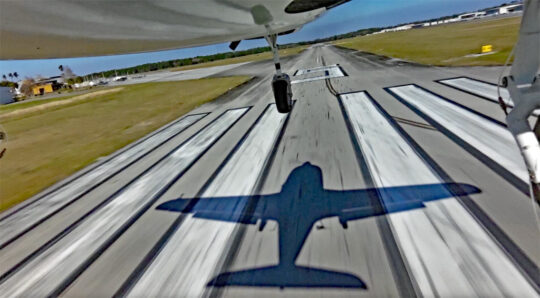 He also noted that TL anticipates installing mostly the newer 160 horsepower
He also noted that TL anticipates installing mostly the newer 160 horsepower 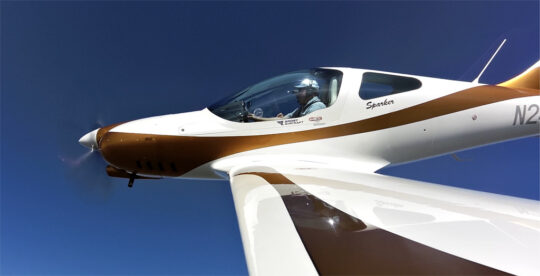 My usual Dutch roll coordination exercise went well quickly after only a few reversals to figure out the control applications. Sparker needs approximately equal amounts of stick and rudder. The controls are slightly heavy but the aircraft is very responsive. The dampened handling makes Sparker comfortable as you are less likely to overcontrol. As my experience grew Trey permitted me to bank steeply where I found Sparker eager to do my bidding. Even in very steep banks, Sparker maintained altitude easily.
I performed the landing back at Spruce Creek with Trey relaxed after I had demonstrated I could feel the airplane fairly well. Reducing to 90 knots on downwind to lower the gear, we slowed to 75 knots on final before putting down full flaps (45 degrees) to slow to 70 over the numbers. Touchdown was smooth and easily controlled. Brakes are quite strong and we turned off easily before maneuvering to a parking space.
My usual Dutch roll coordination exercise went well quickly after only a few reversals to figure out the control applications. Sparker needs approximately equal amounts of stick and rudder. The controls are slightly heavy but the aircraft is very responsive. The dampened handling makes Sparker comfortable as you are less likely to overcontrol. As my experience grew Trey permitted me to bank steeply where I found Sparker eager to do my bidding. Even in very steep banks, Sparker maintained altitude easily.
I performed the landing back at Spruce Creek with Trey relaxed after I had demonstrated I could feel the airplane fairly well. Reducing to 90 knots on downwind to lower the gear, we slowed to 75 knots on final before putting down full flaps (45 degrees) to slow to 70 over the numbers. Touchdown was smooth and easily controlled. Brakes are quite strong and we turned off easily before maneuvering to a parking space.
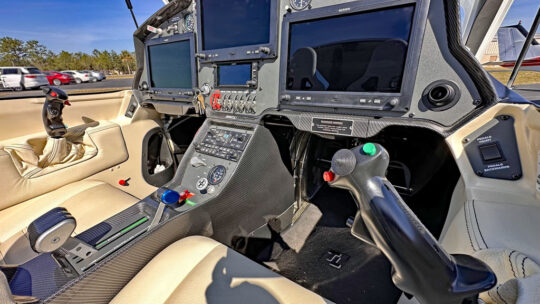 Sparker is going to please the Mosaic crowd. At $327,000 this is no Part 103 ultralight or Sport Pilot kit aircraft. You'll need a generous budget but you will get a lot for your money. So far as I could see, TL didn't miss a trick with Sparker. Check it out in person at
Sparker is going to please the Mosaic crowd. At $327,000 this is no Part 103 ultralight or Sport Pilot kit aircraft. You'll need a generous budget but you will get a lot for your money. So far as I could see, TL didn't miss a trick with Sparker. Check it out in person at 